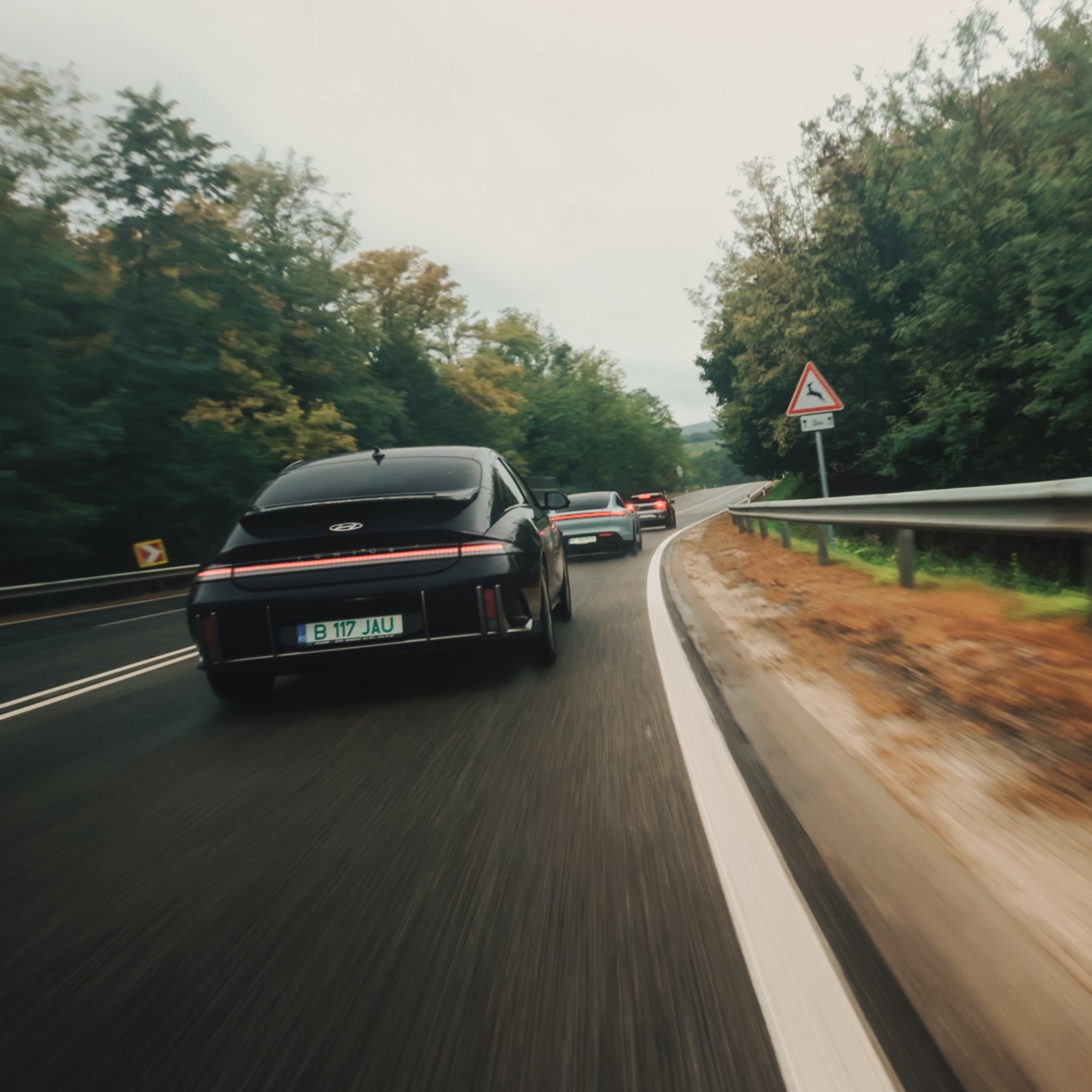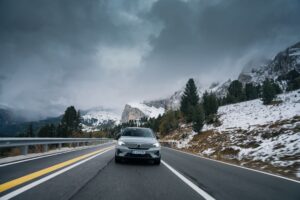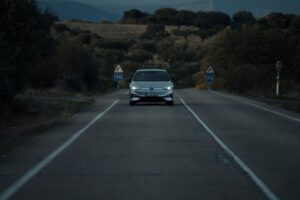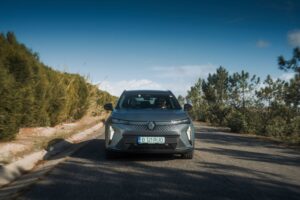“He likes it brusque,” the lady at one of the OMV gas station’s houses on the outskirts of Arad scolded me. I had swiped an OMV Routex card through the POS, as I had just refueled the car I drive in EUROCHARGE.
“Okay, I’ll push him.”
“Yes, yes, that’s it, more abrupt!”, repeats the lady, as she clenches her fist, brings it to the diaphragm by bending her elbow and, with the palm of her hand pointing downwards, describes a short, face-side-to-side, percussive movement.
It worked. We’re back on the road. The third day of the tour is a transit day, so we drive, drive and drive, from Brasov to Balaton. The fourth was supposed to be a climax, an intermediate victory, a crossing from Hungary into Austria glazed by Austria’s most beautiful road.
Contrast carousel
I have always said that ROCHARGE and, more recently, EUROCHARGE, first and foremost, are mobile laboratories. For the first two days we put on our lab coats, rinsed out our Berzelius beakers and test tubes, mounted the periodic table of elements on the wall and did our best to gather everything we knew about the stuff called the automotive industry. Over the next couple of days, we moved on to mixing reactants.
And EUROCHARGE found me in Assistance Car. This year, the car from which the piano is being loaded so that the electrics can dance mutely over every kilometer given by the batteries is a BMW X5. That means several things. Relevant to what I’m about to write next is that, right off the bat, I’ve mostly got an overview of the 8 electrics that are moving between charges and destinations.

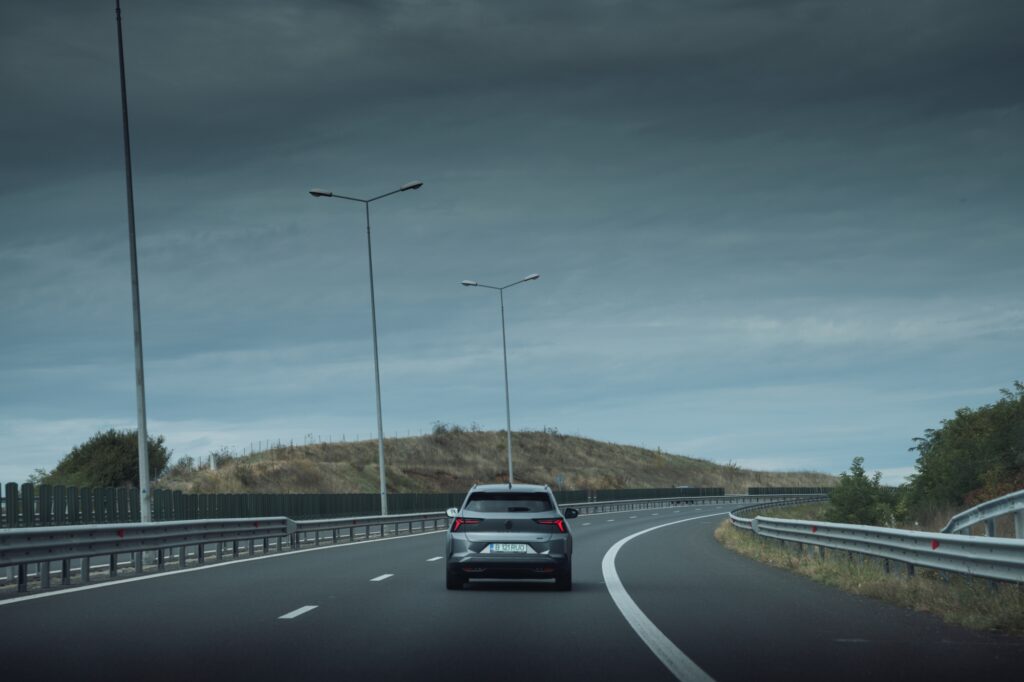
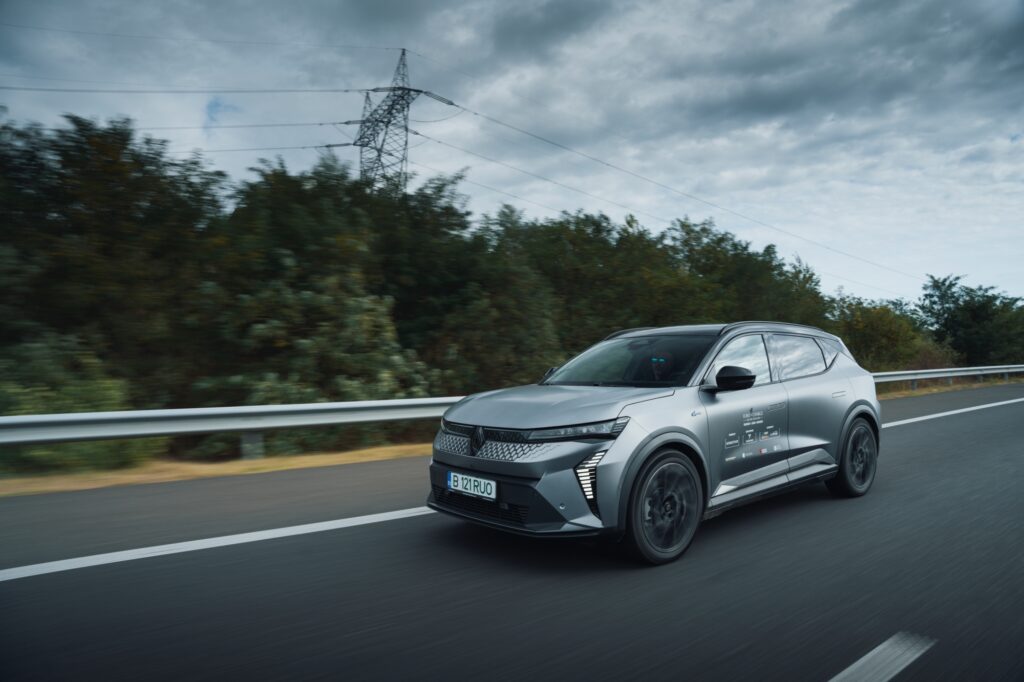
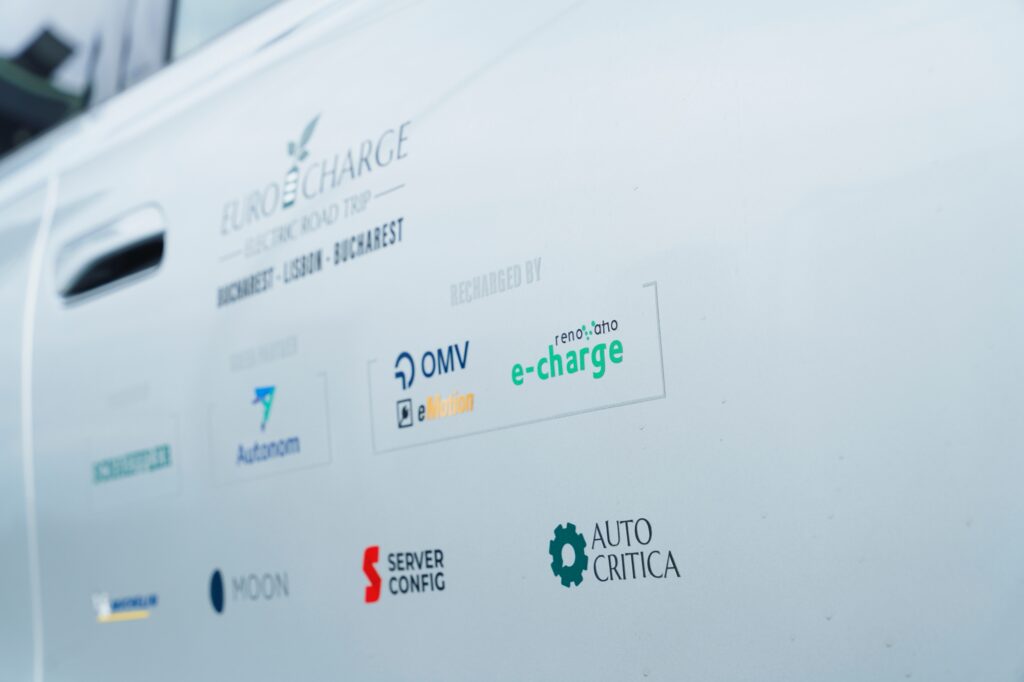
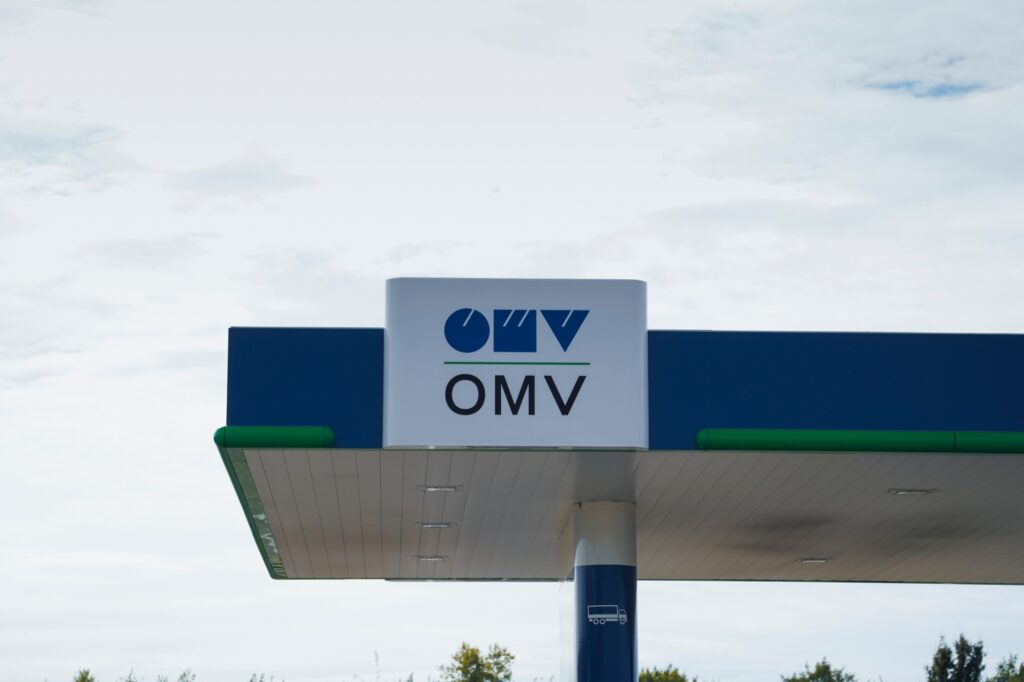

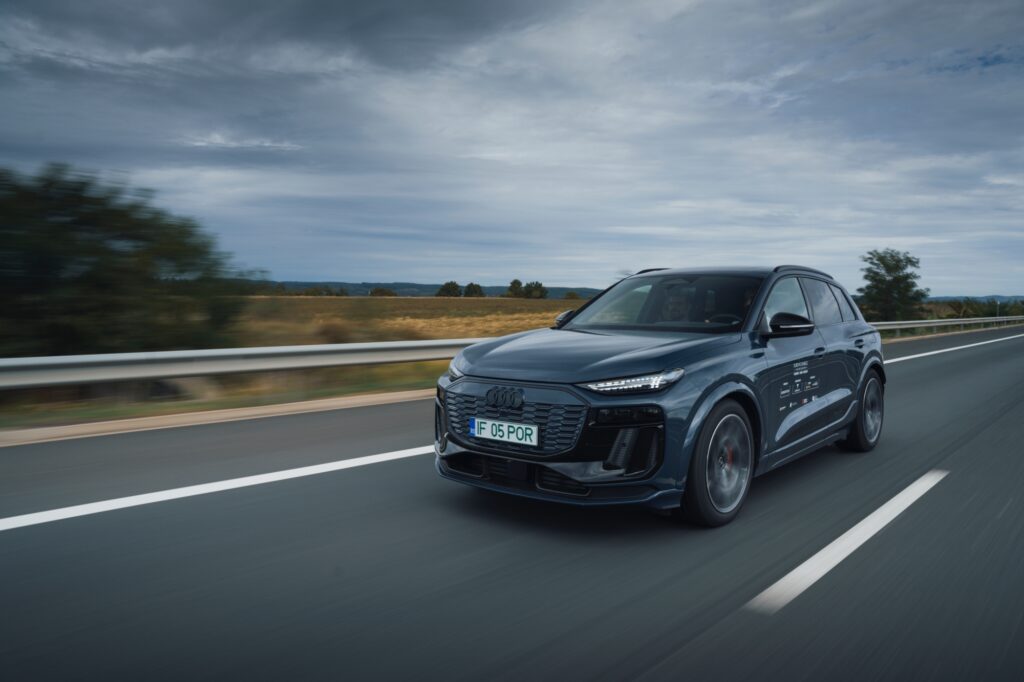
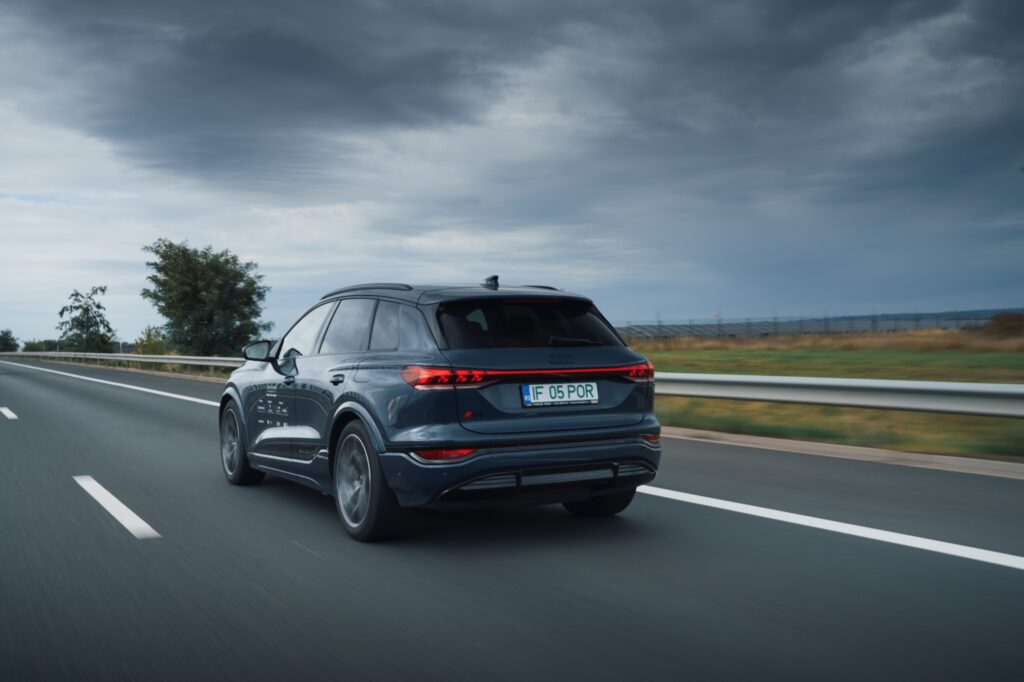
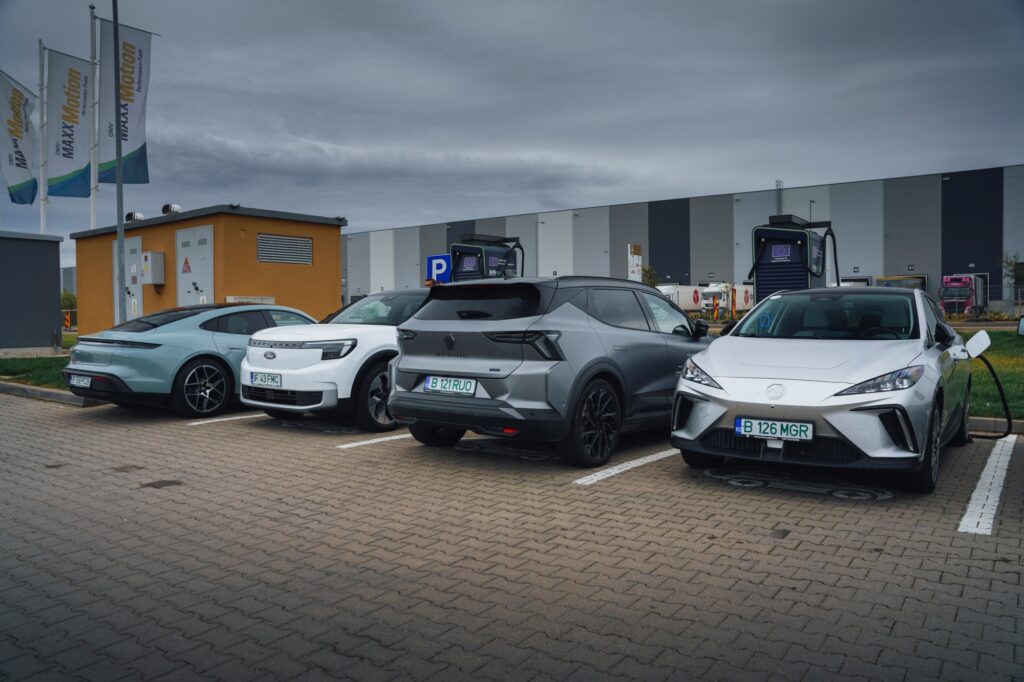

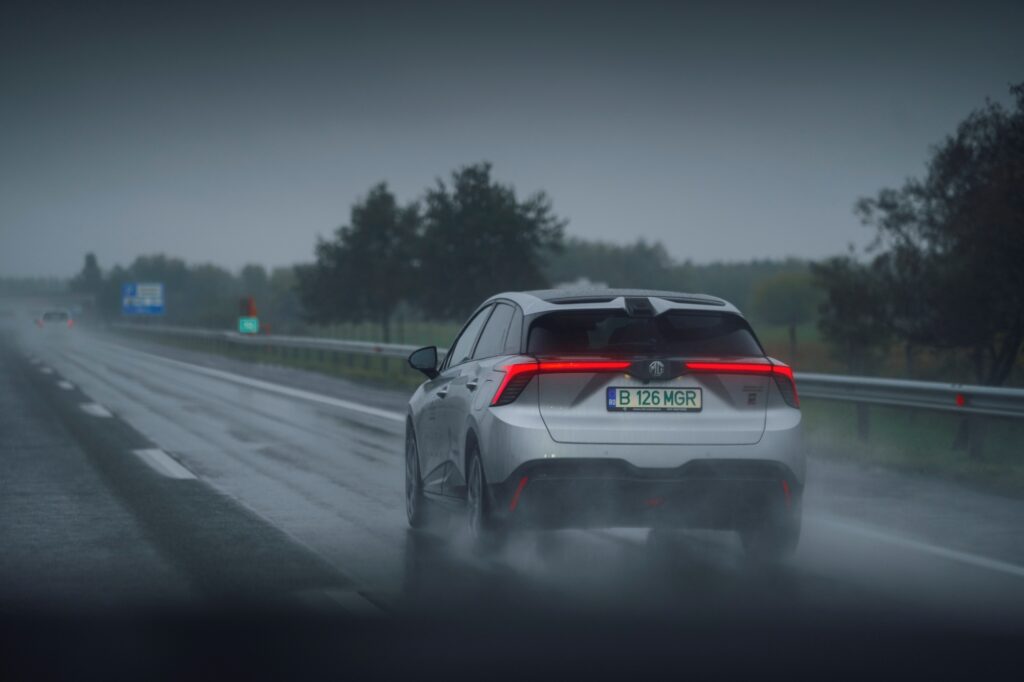
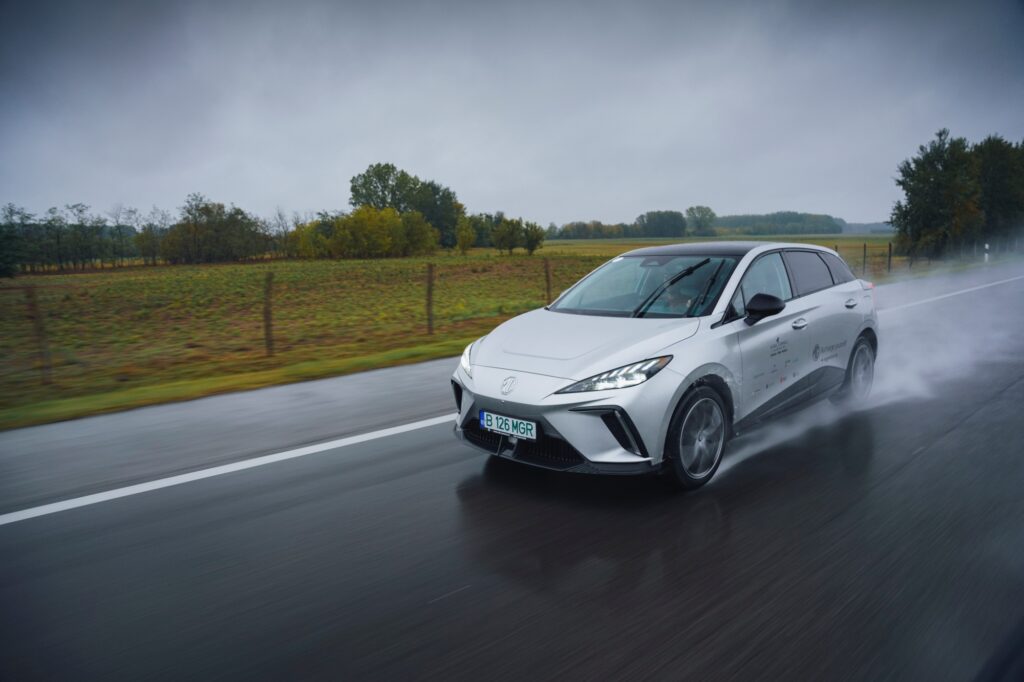
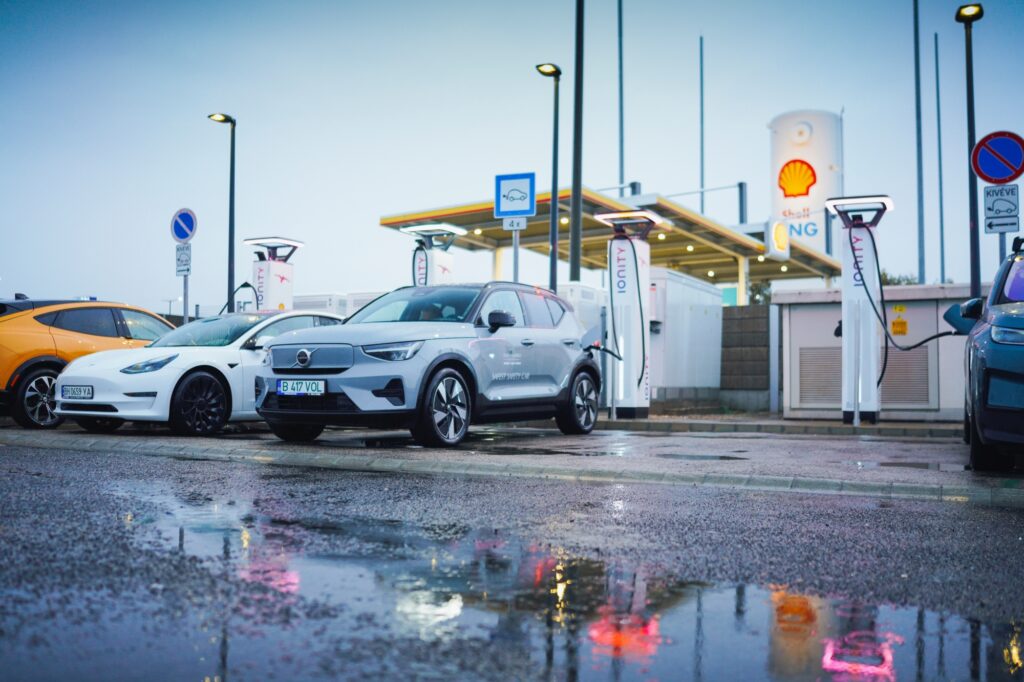
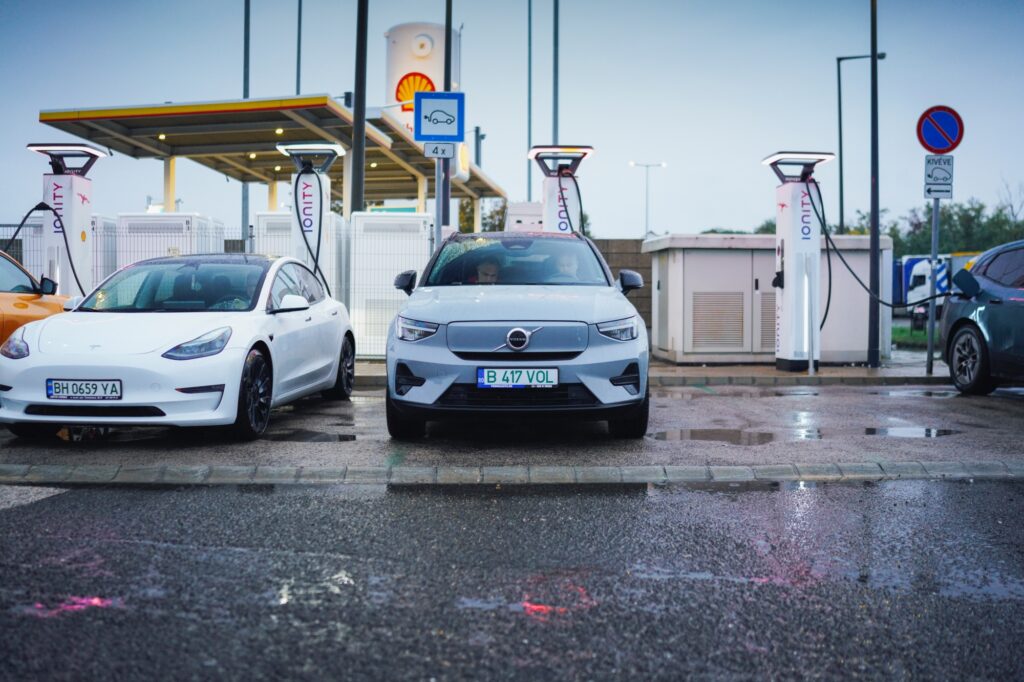

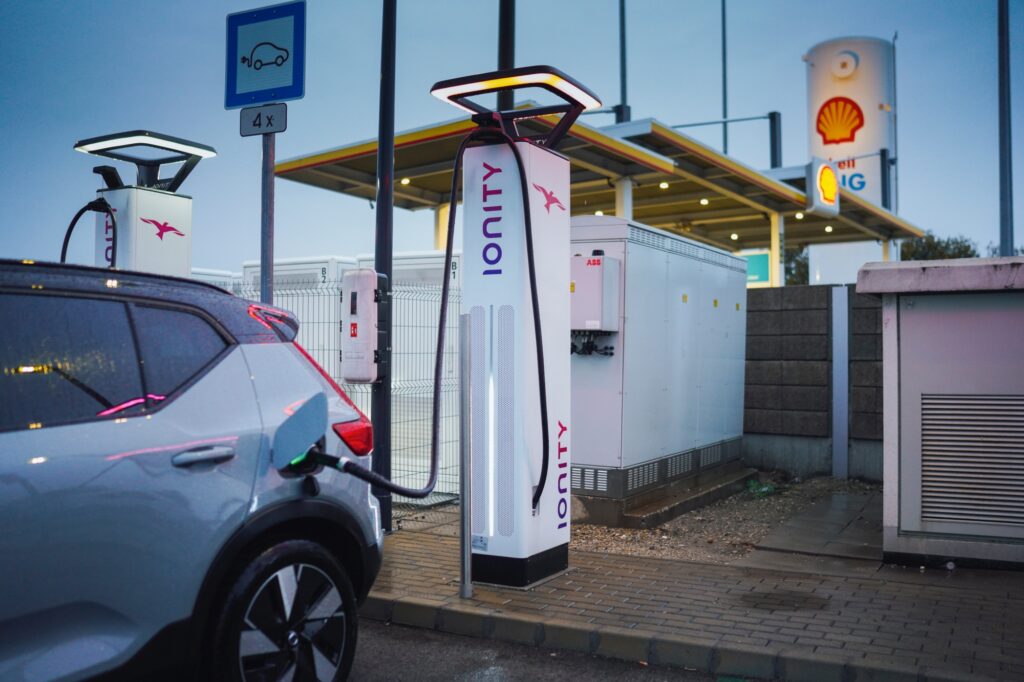
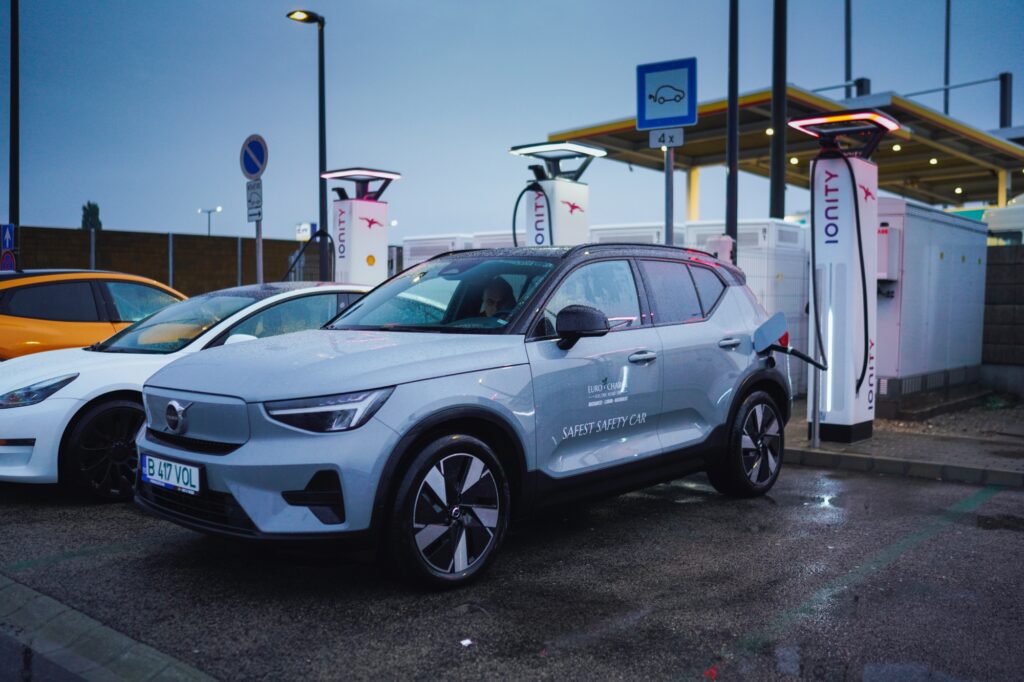
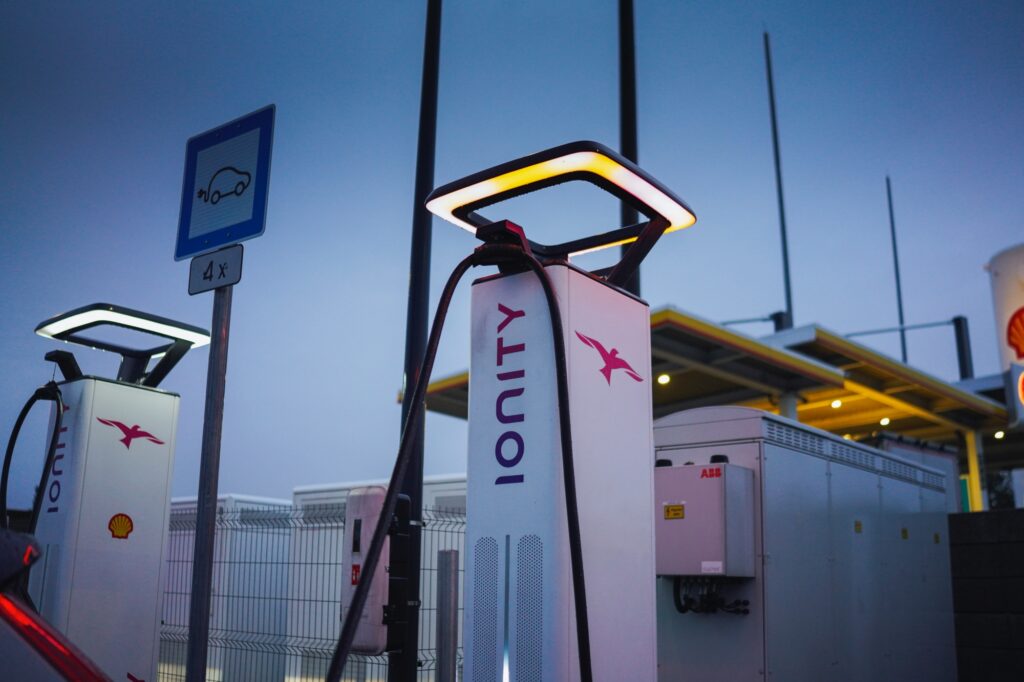
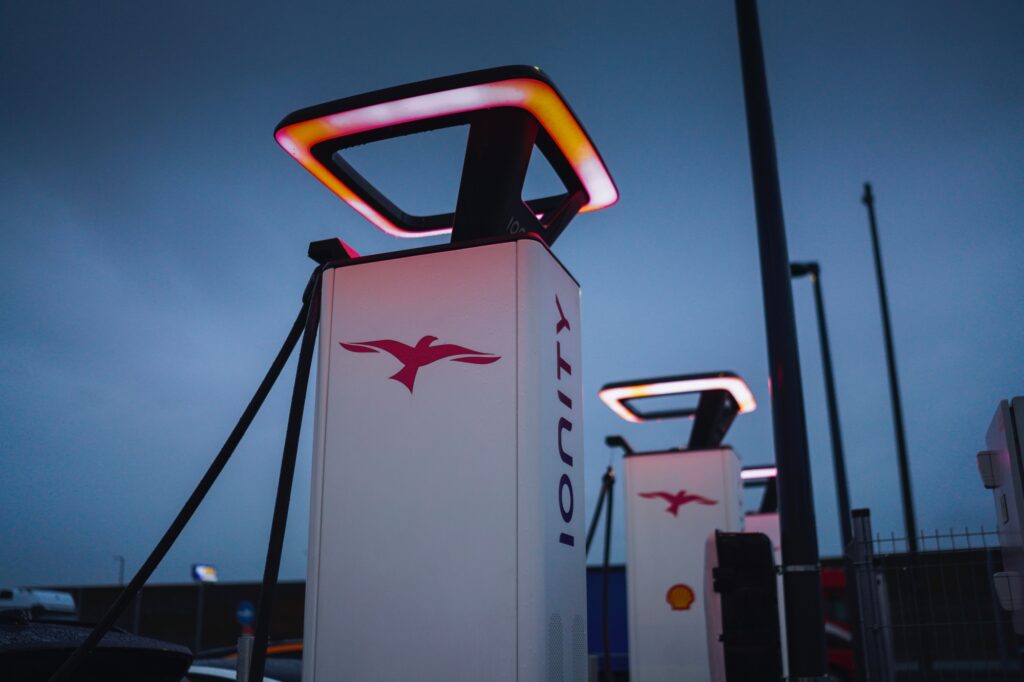
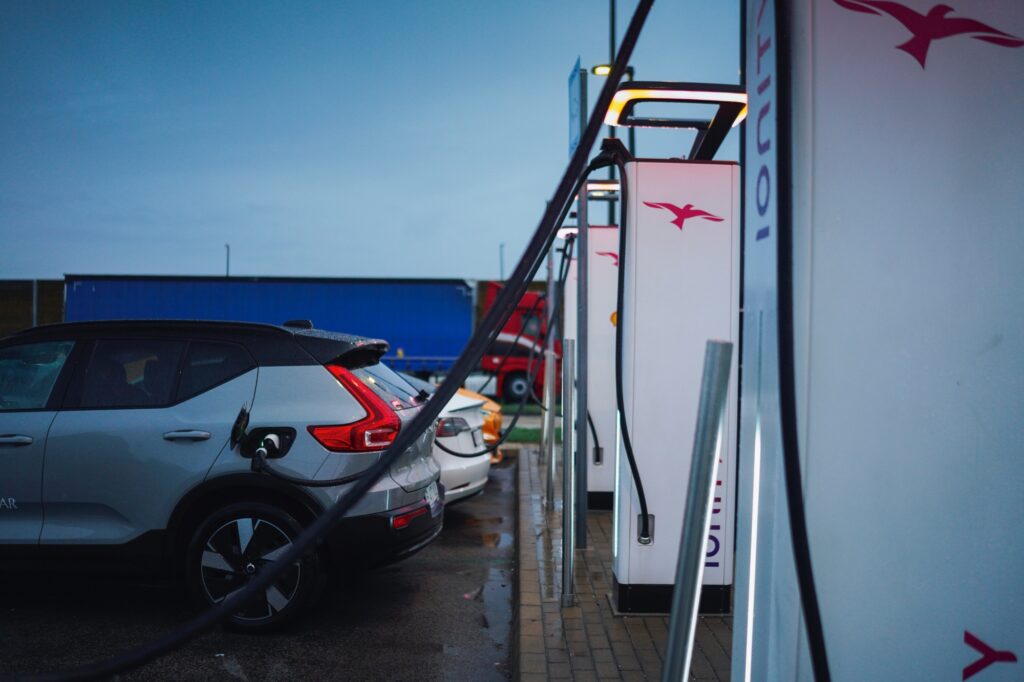
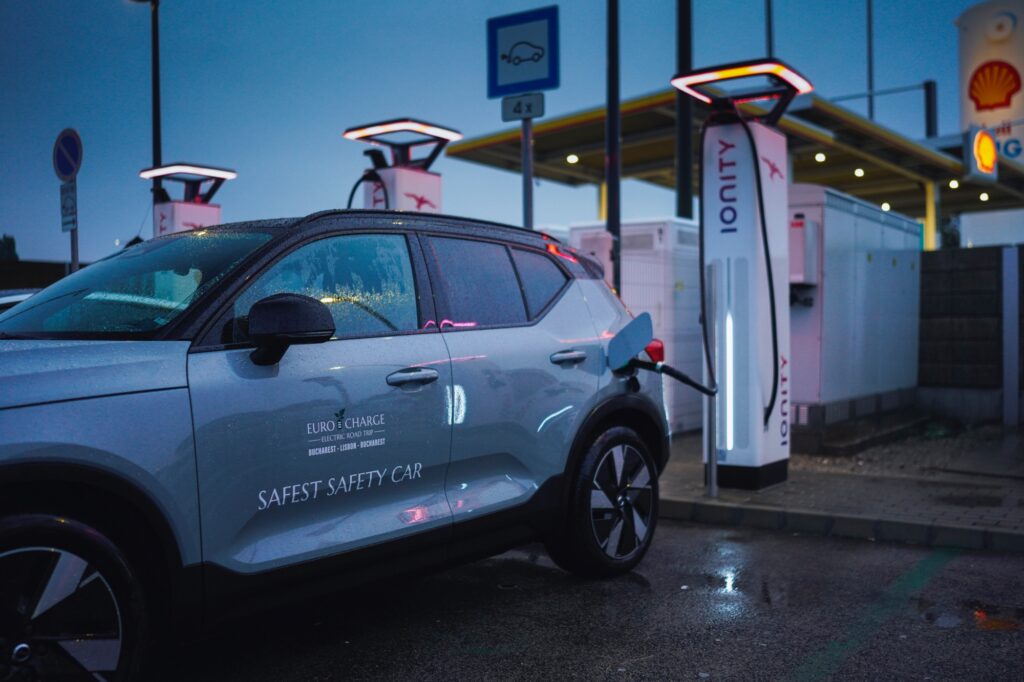
Speaking of which: in normal (i.e. legal) driving, it would have been impossible for me to catch up with an electric without putting points on my license and at least three lives in danger. So far, without exception, people have stuck the cable ends in cars, rammed some carbs in, and that’s your way. At a normal, appropriate pace, no inhibitions, no road tantrums. That’s why we have scheduled and announced stops for filming and photography, with 2-3 cars at a stop, especially on transit days.
It’s about 900 kilometers from under the Tâmpa to the Balaton plain. Pestriți, because Romania has a bipolar talent for creating extremes, reflected in the weather. Capricious enough to bathe in three seasons in the same day: 3 degrees with sunshine as we left Brasov, about 17 degrees under a cloud ceiling in the Banat and 11 degrees in the lash of rain that hit us after Szeged, in Hungary, and didn’t even leave the wipers alone.
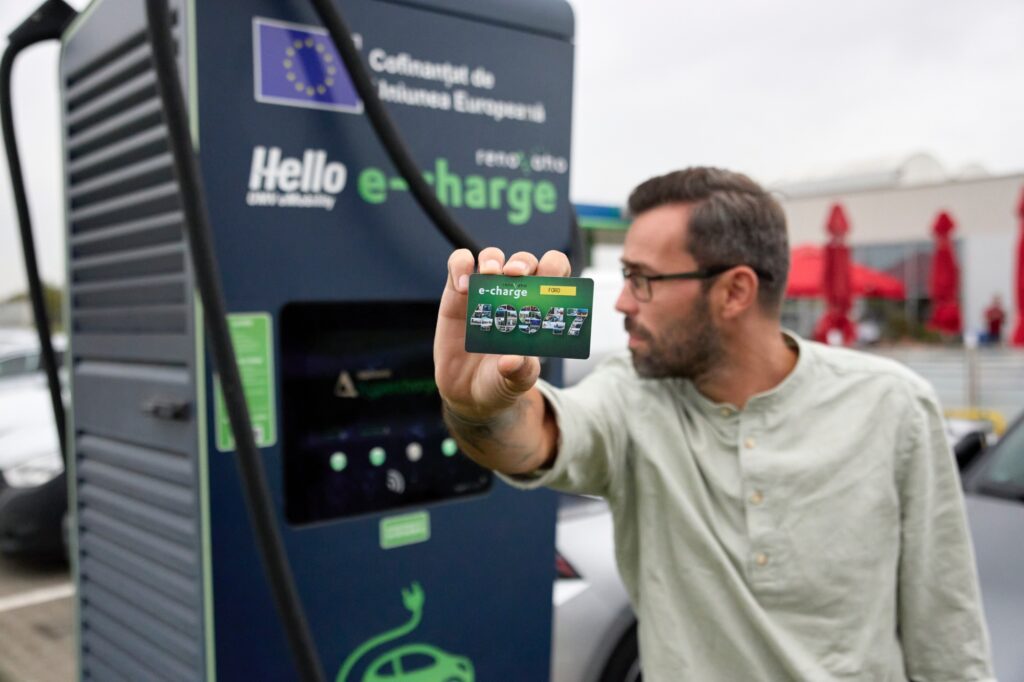
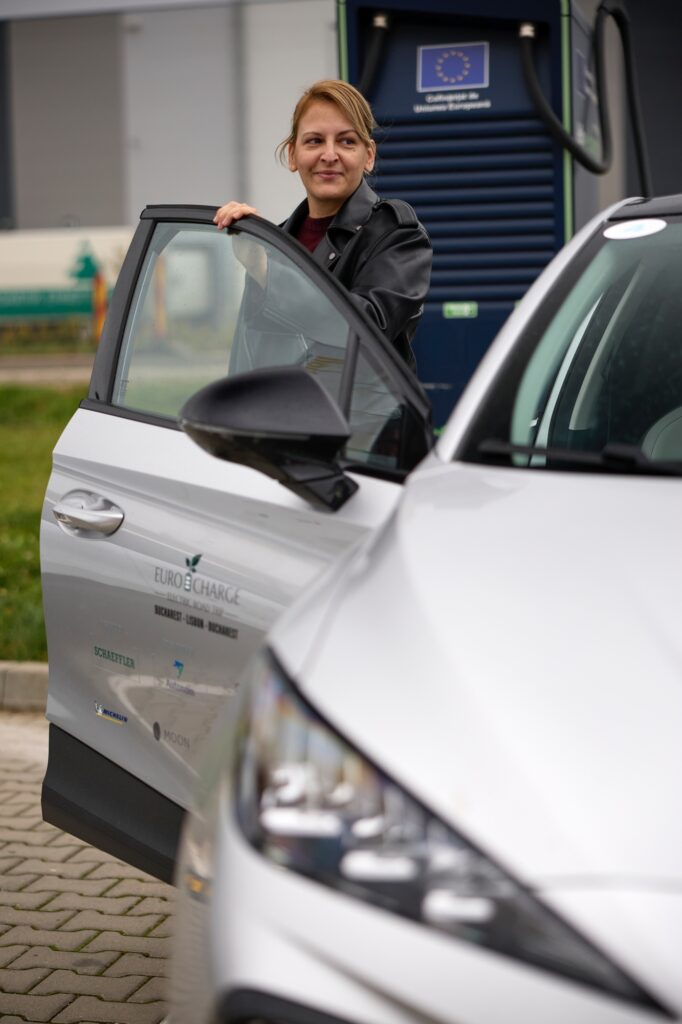
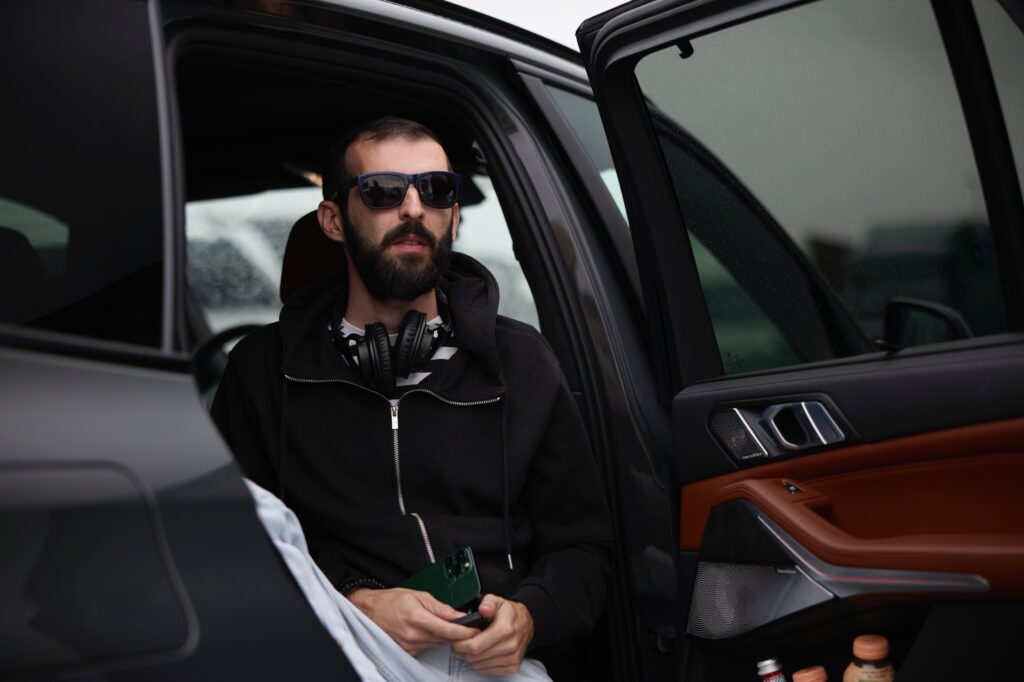
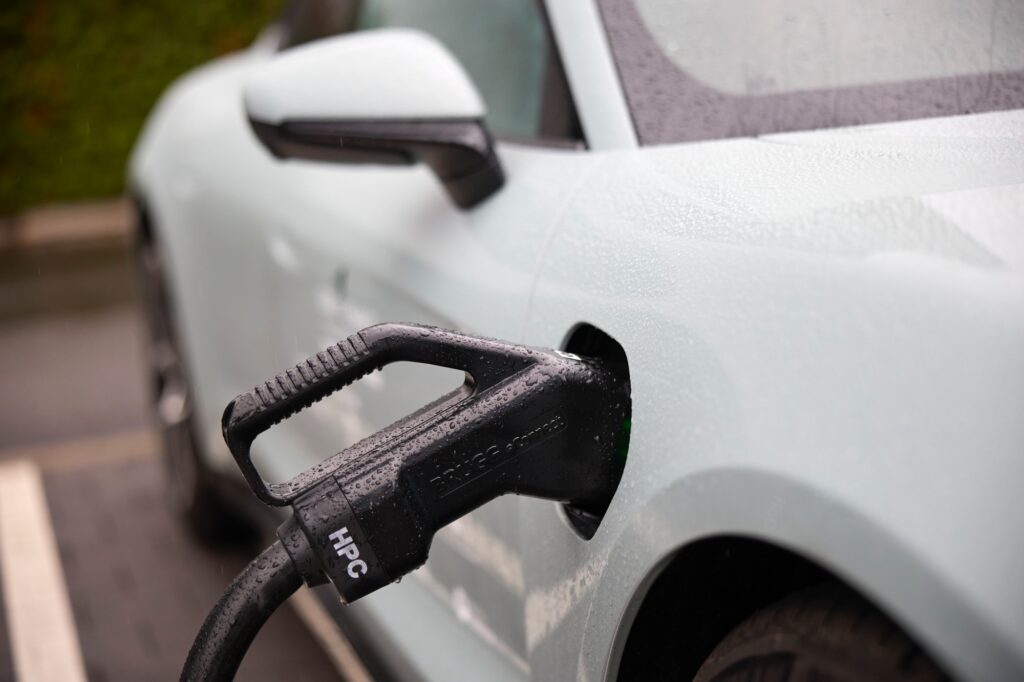
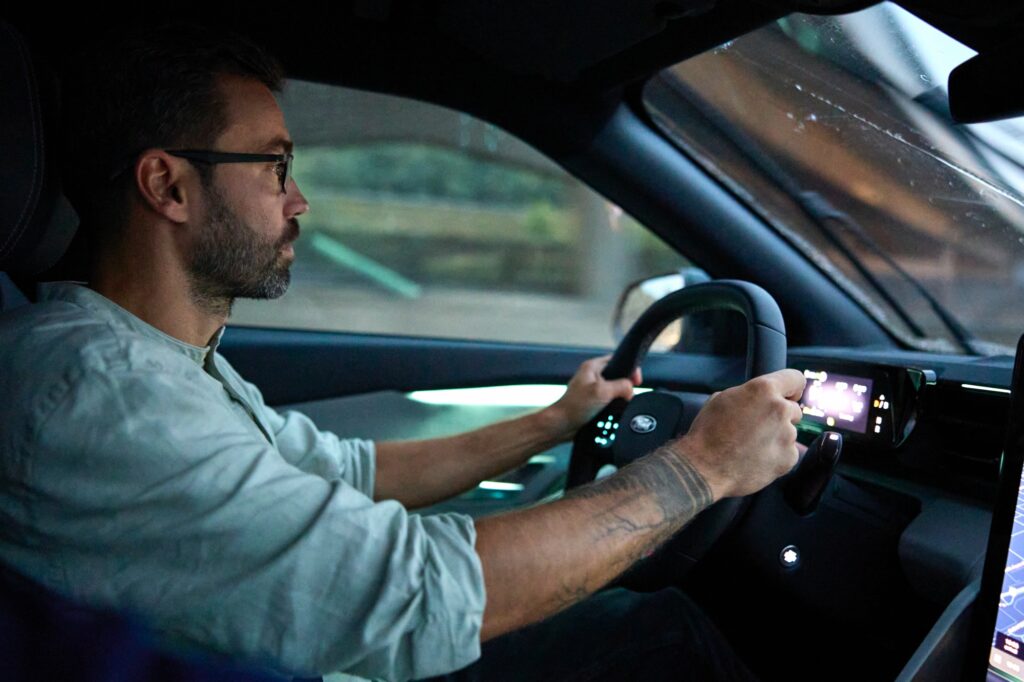



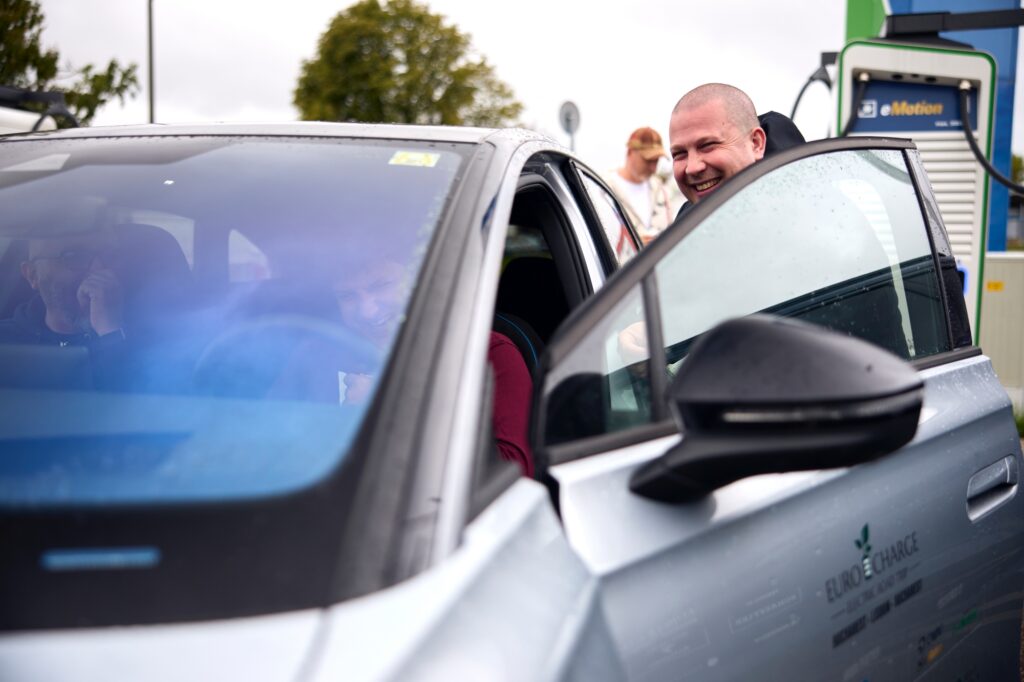
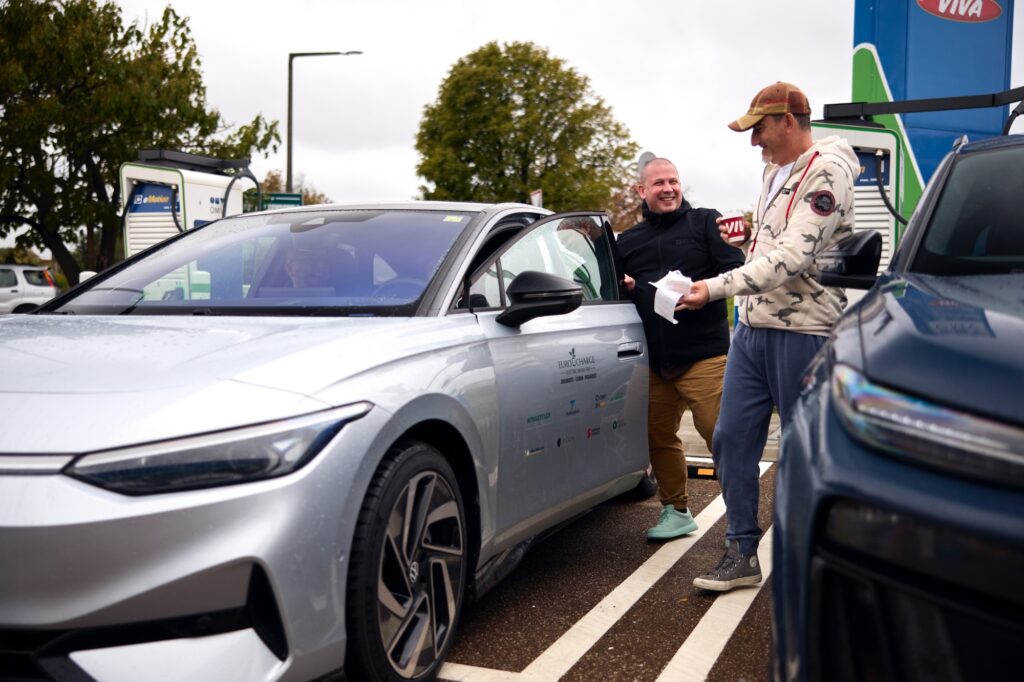
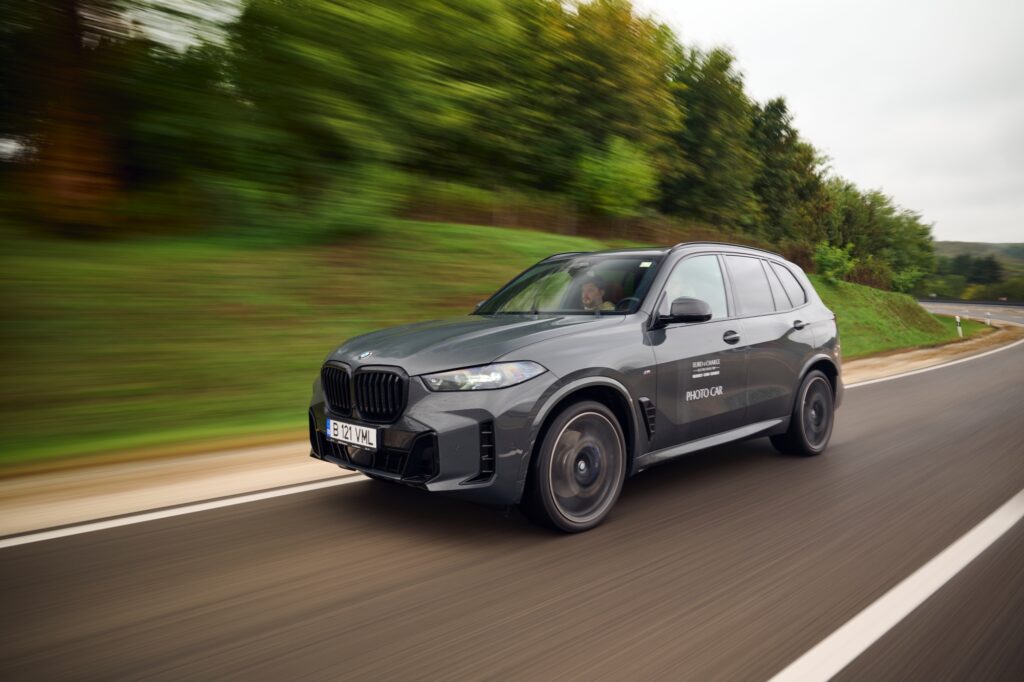
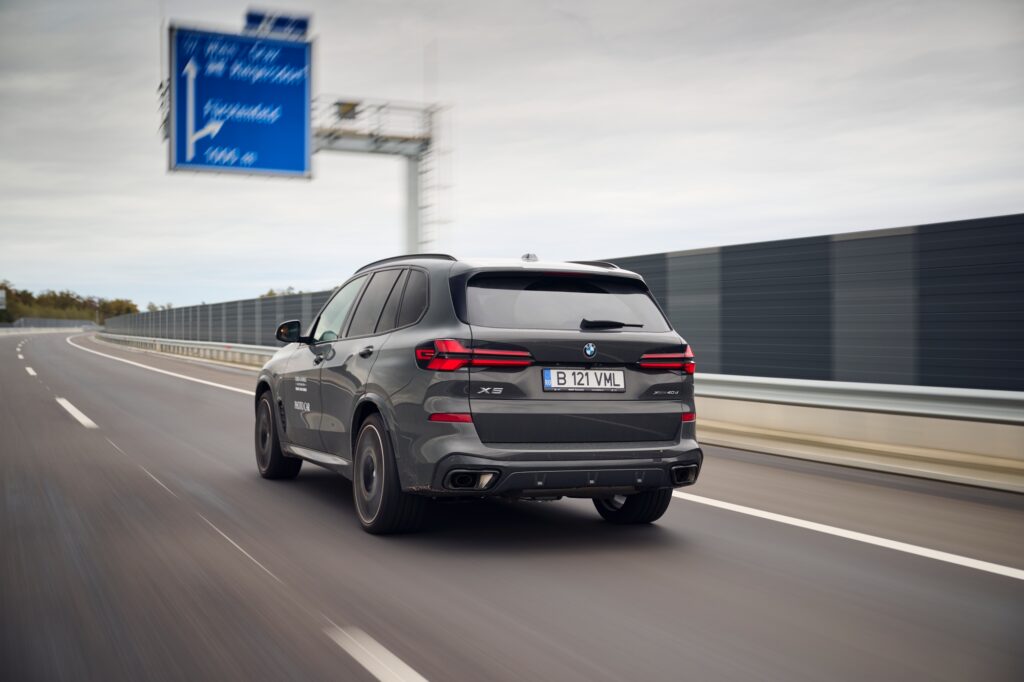
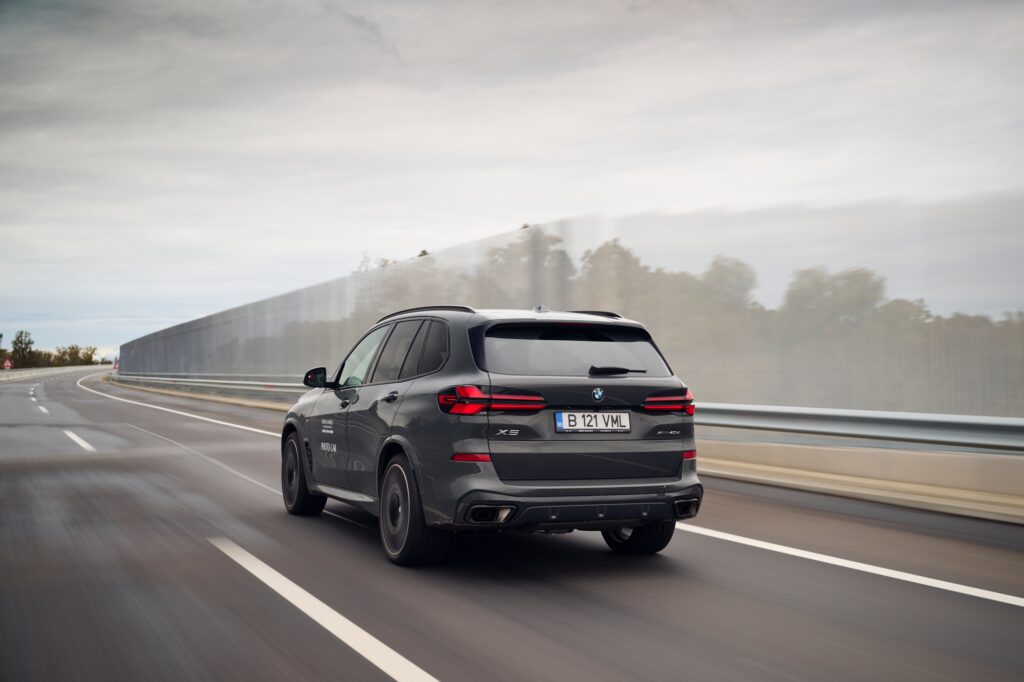
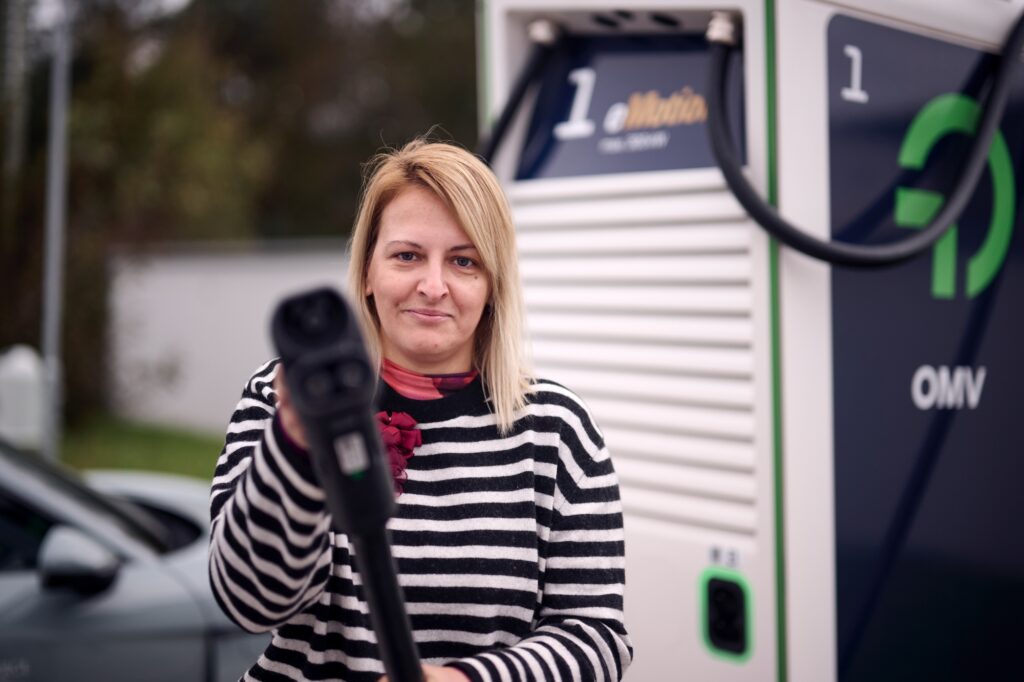
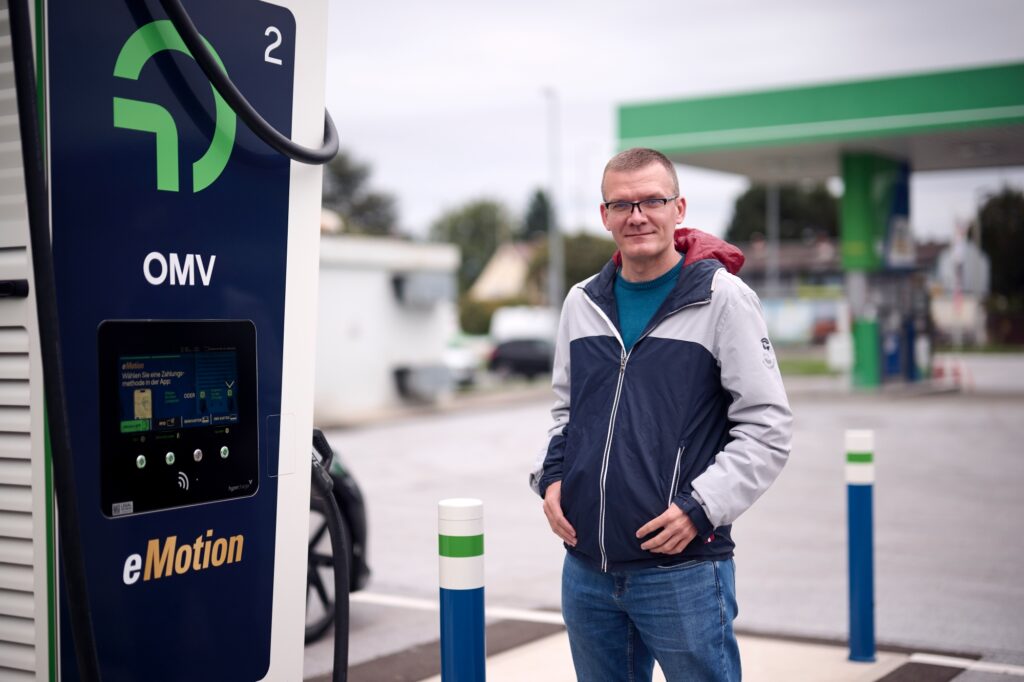
I don’t know about others, but on the road from Brasov to Sibiu via Făgăraș, I think we all know it, I got a craving for the mountains. It may have been the snow-dusted ridges or simply the thought that every kilometer brought us all closer to Austria and the Grossglockner.
This is not the way
I’d forgotten how beautiful Austria is, even folded in fog and little, thick rain. I blame the geography textbooks from primary school, which taught many of us that here the hills are the most beautiful, the peaks the wildest and the grass a little greener. No. Not while Austria has a say.
In fact, Austria is more about how man has designed and how he has preserved the place by what has grown out of the earth, from the rock to the last weed. How it’s come sanding over asphalt, how it’s dug into the mountains for the broad snakes with white markings, or how it’s all laid, built or fitted to the millimeter with care for the landscape behind. If Austria were a car, it would crush anything that means standard assembly.
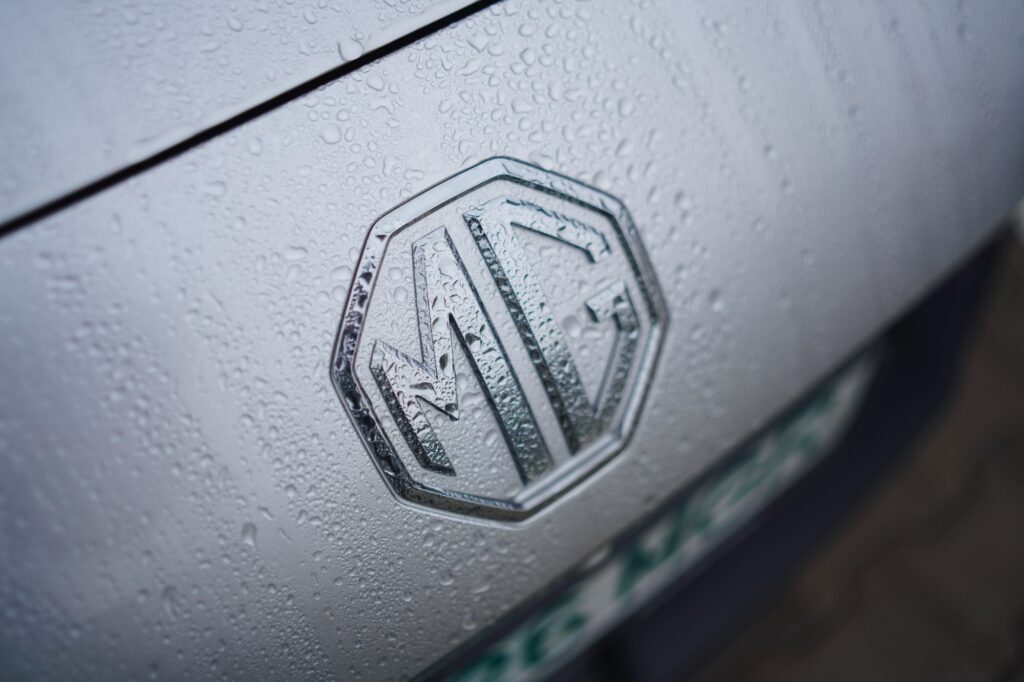
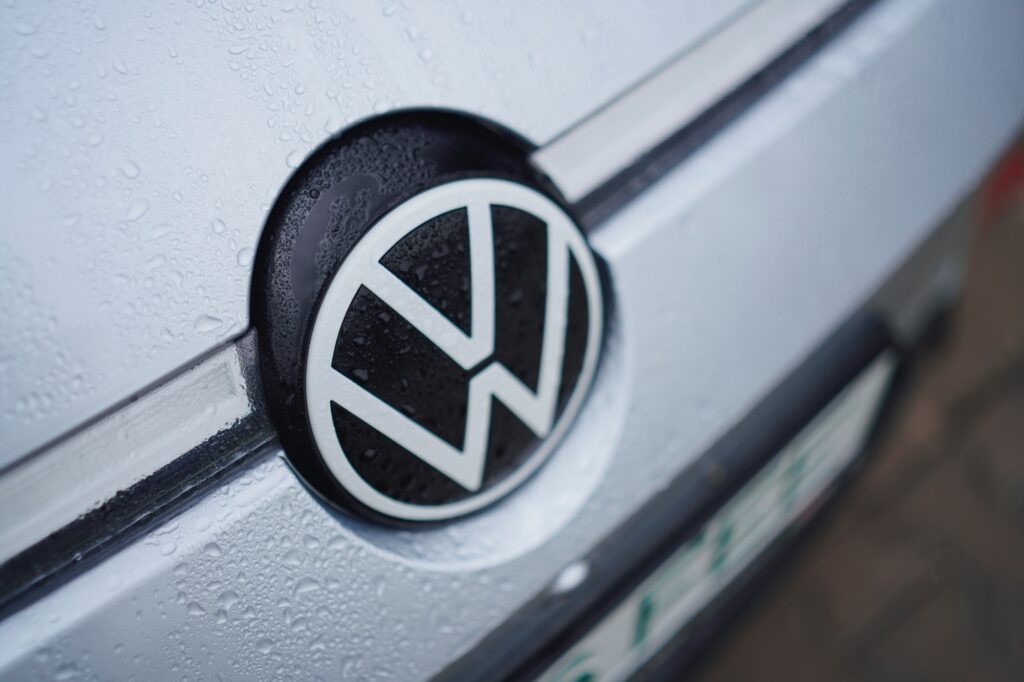
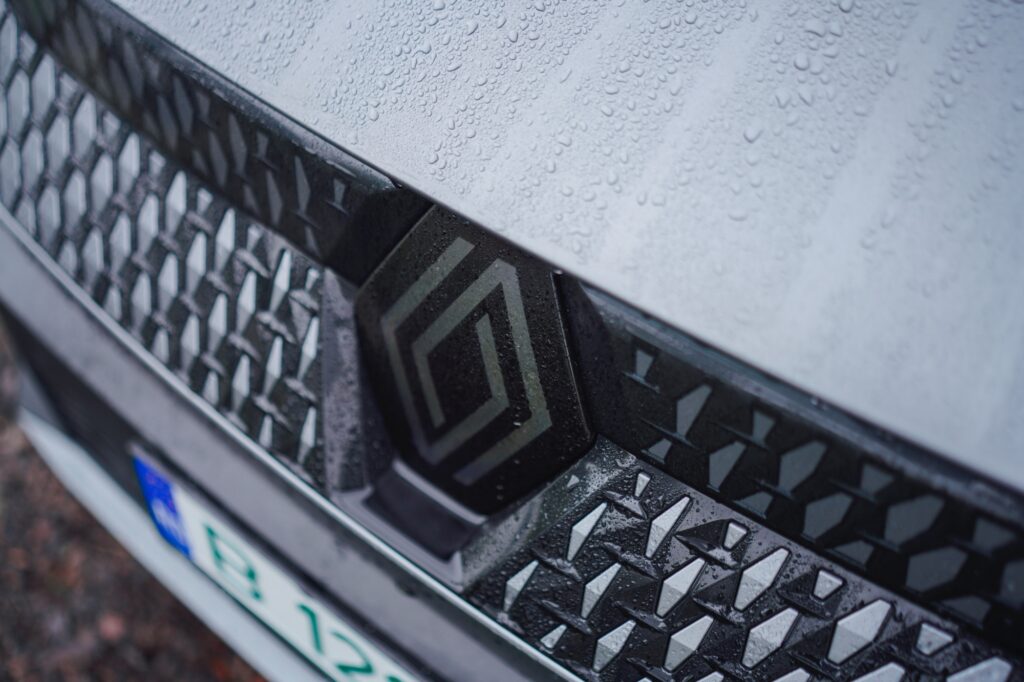
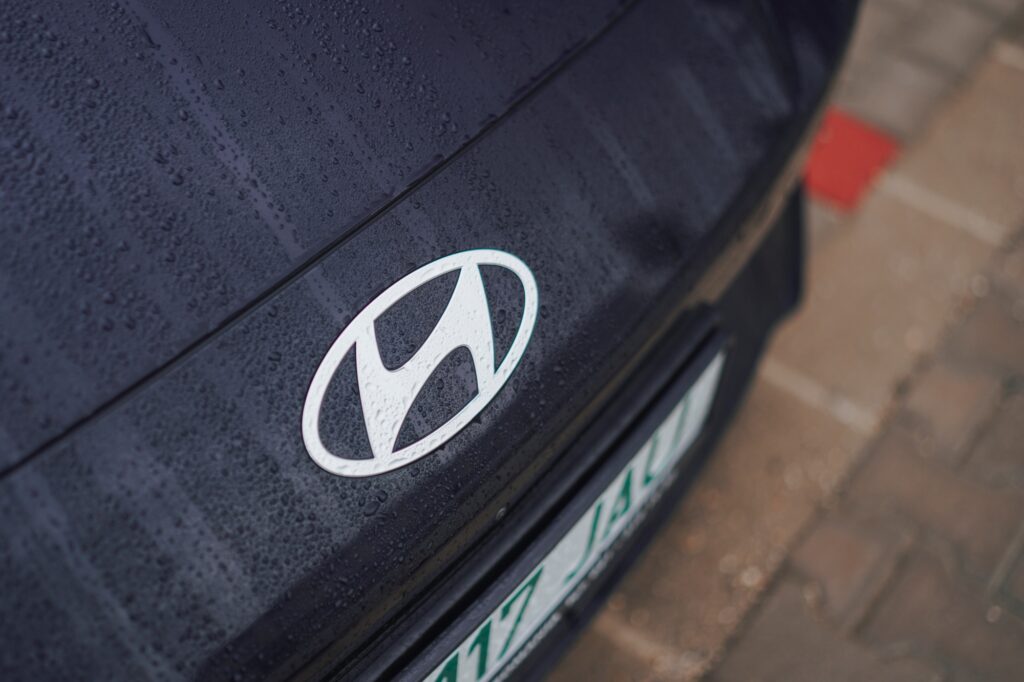

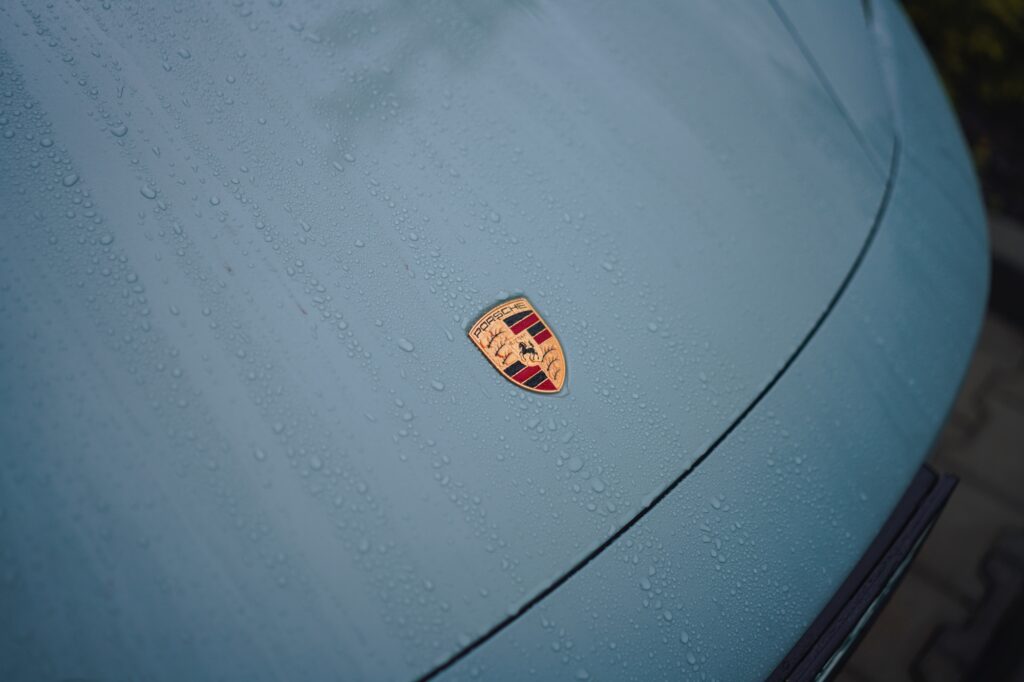
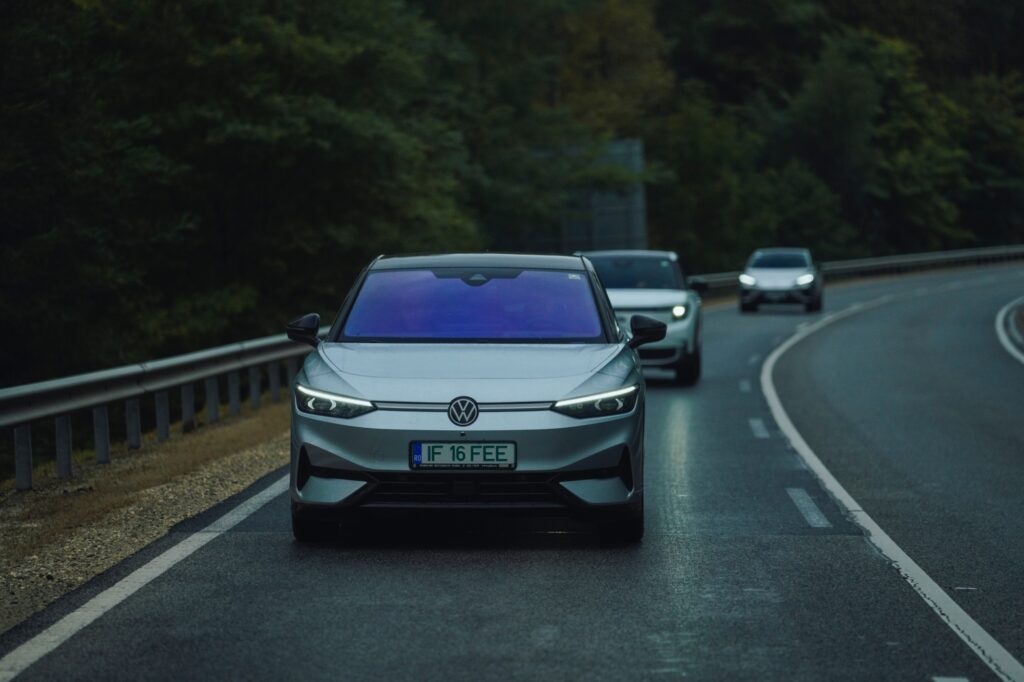

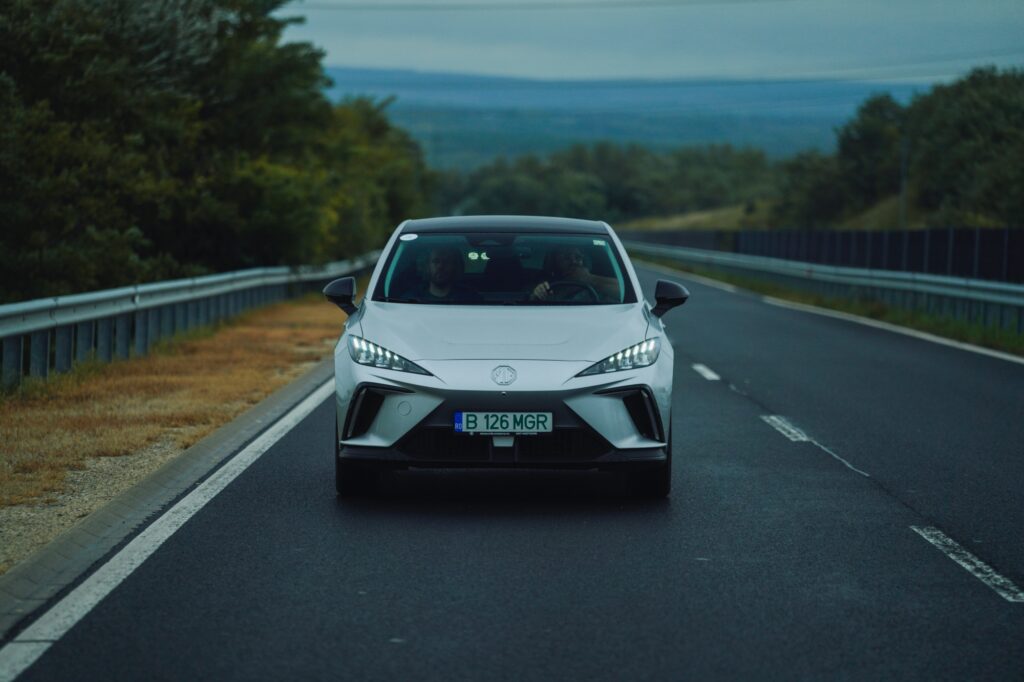
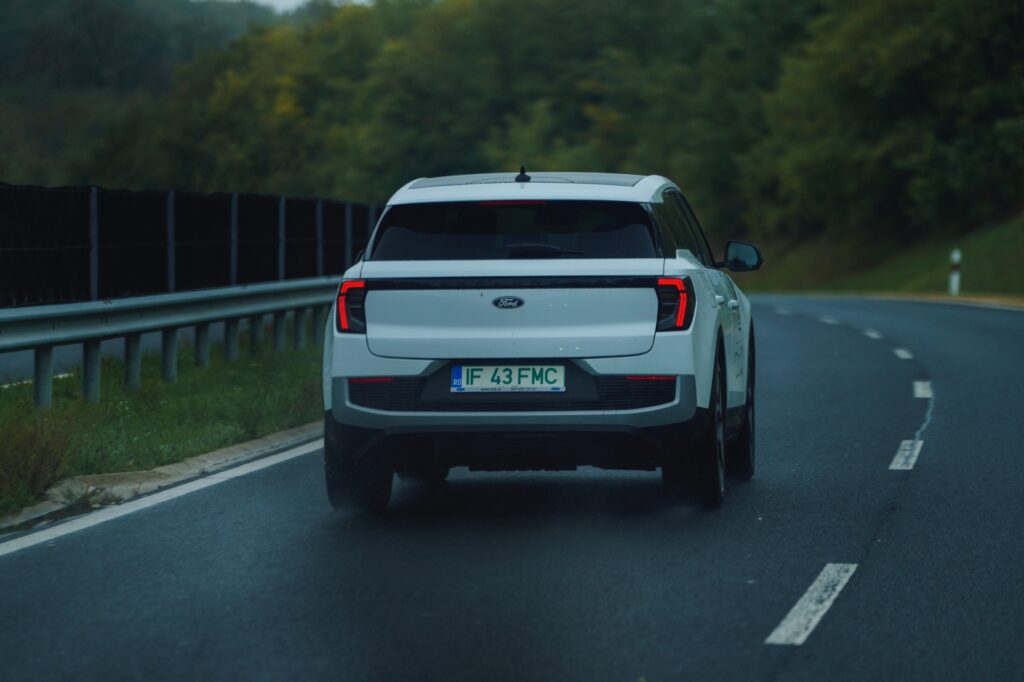

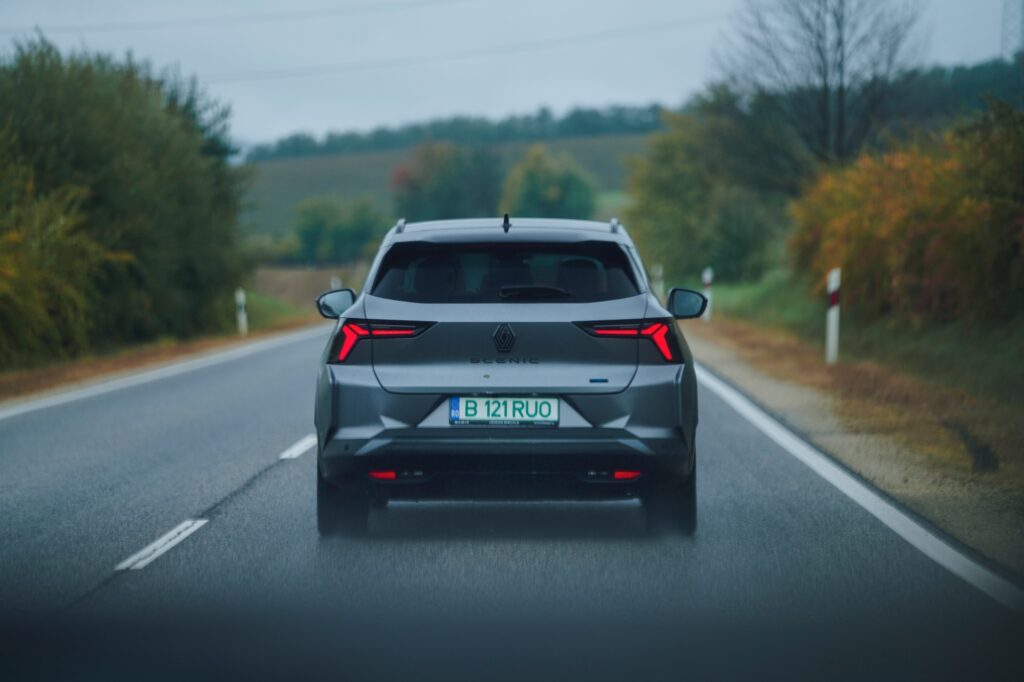
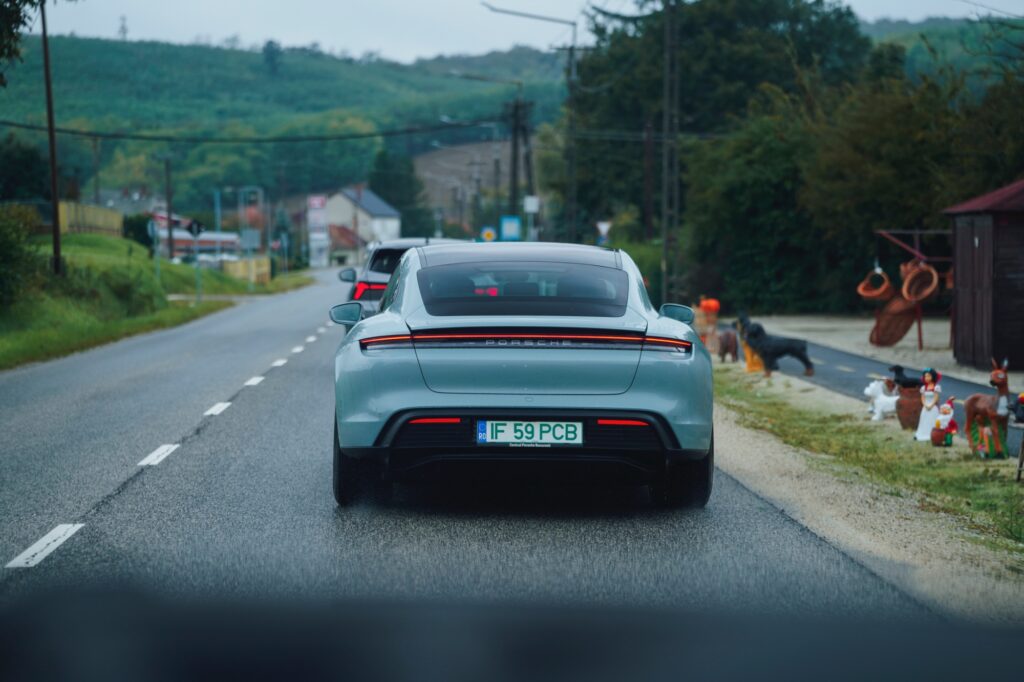
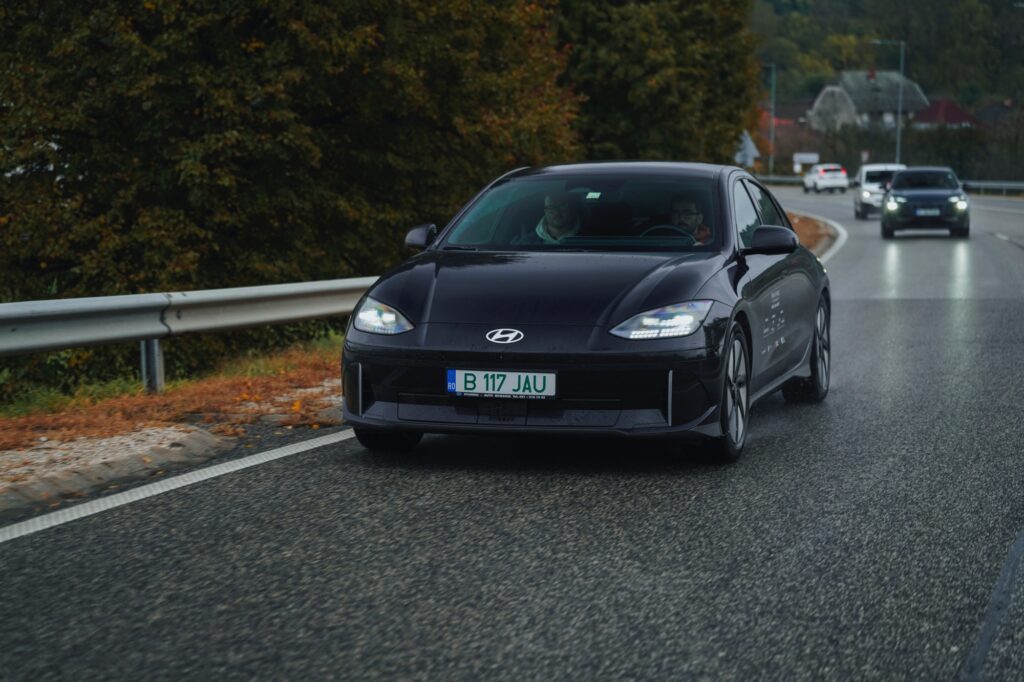
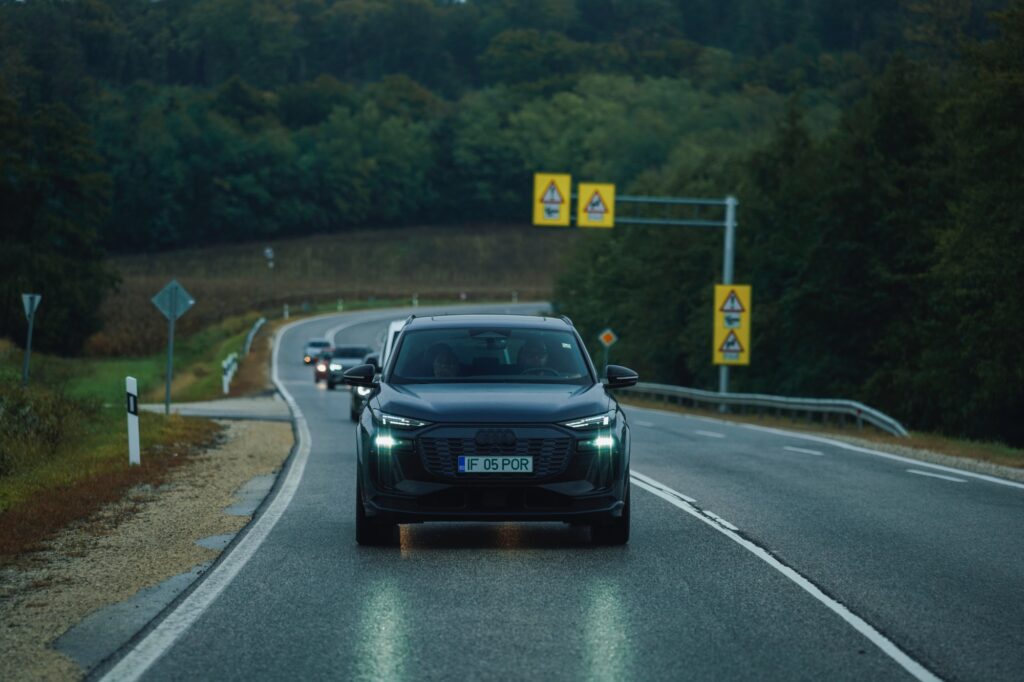
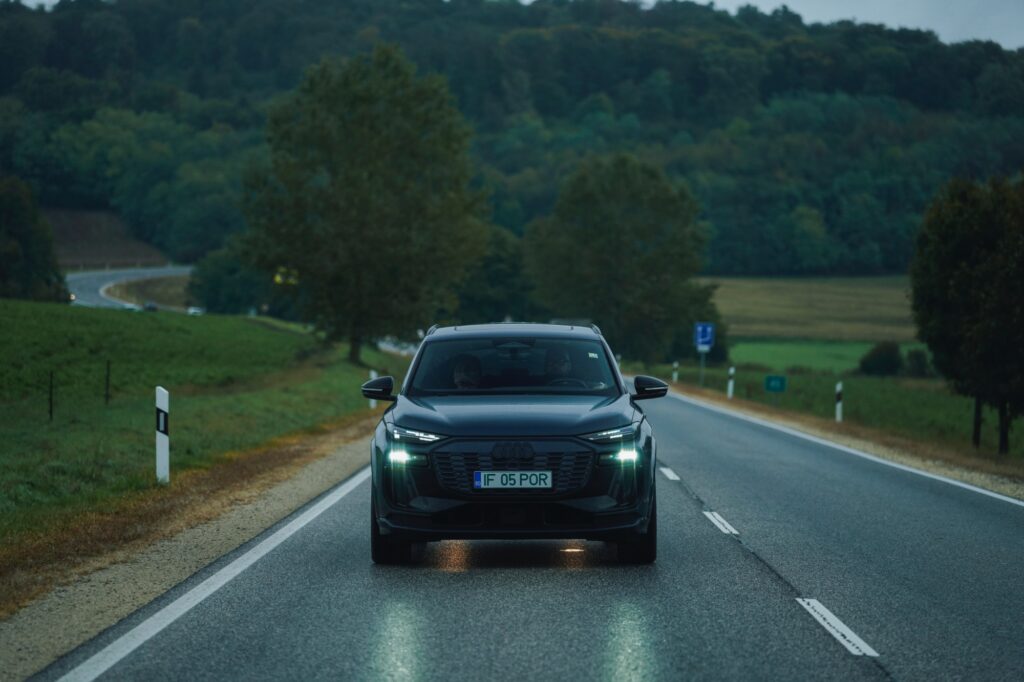
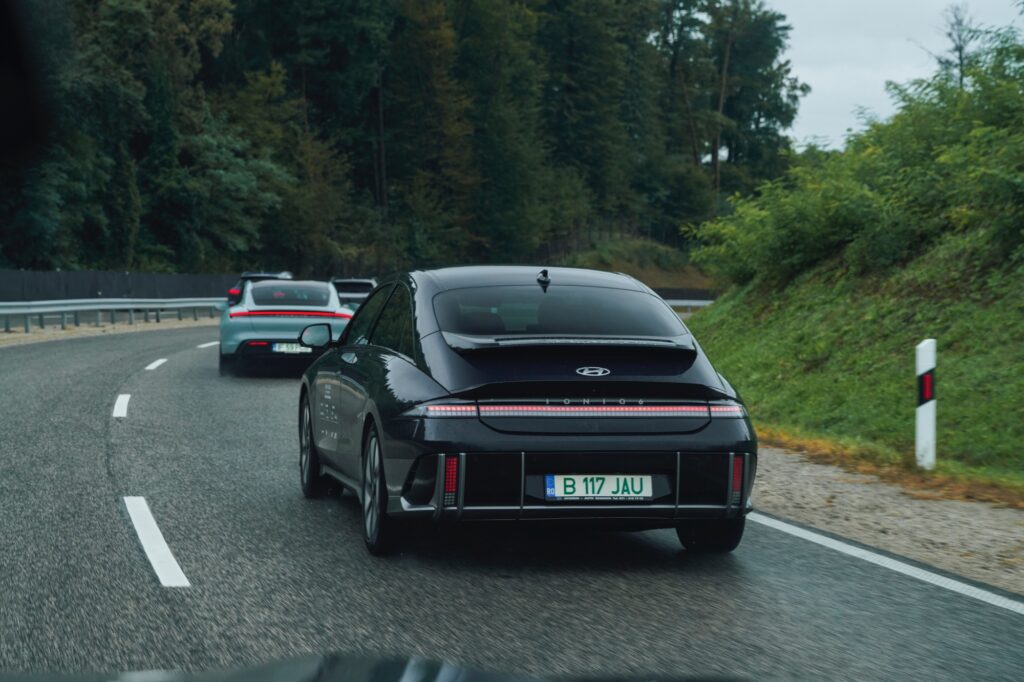
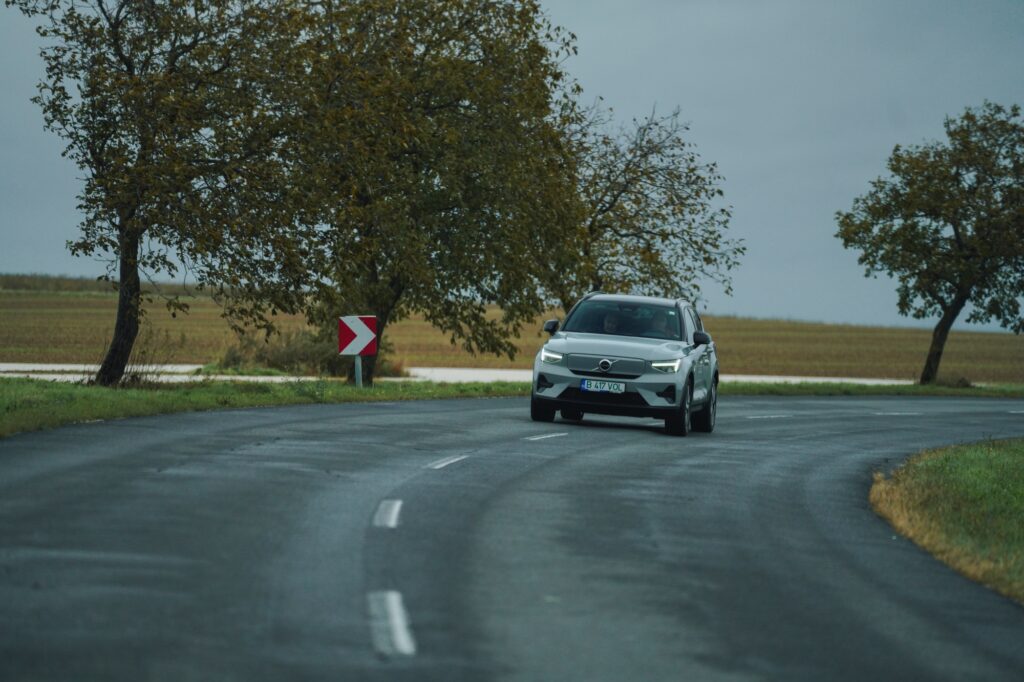
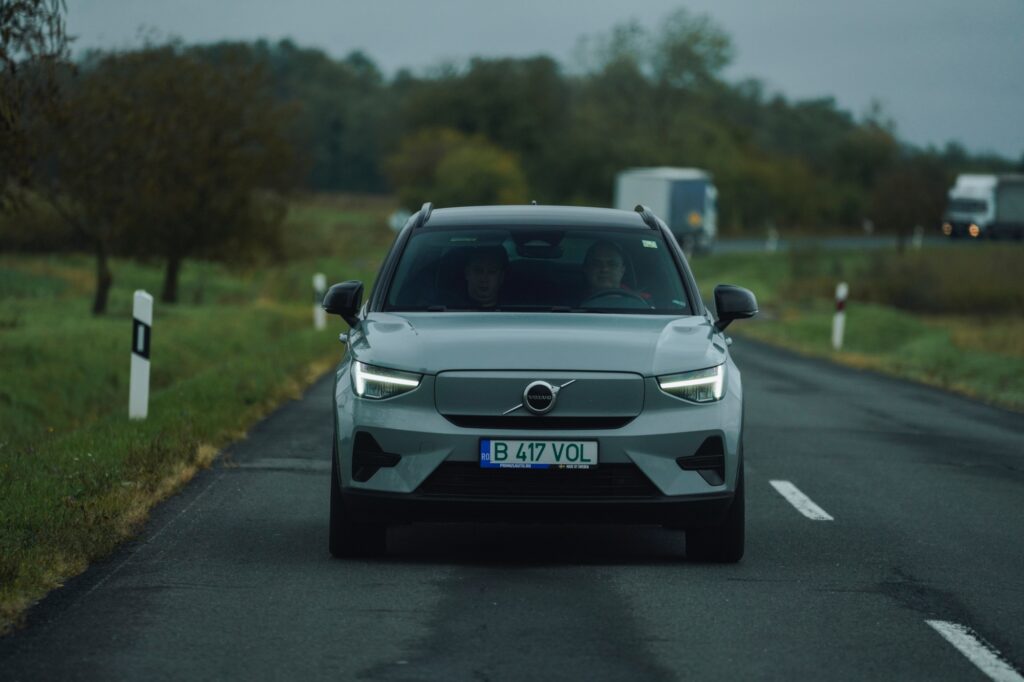
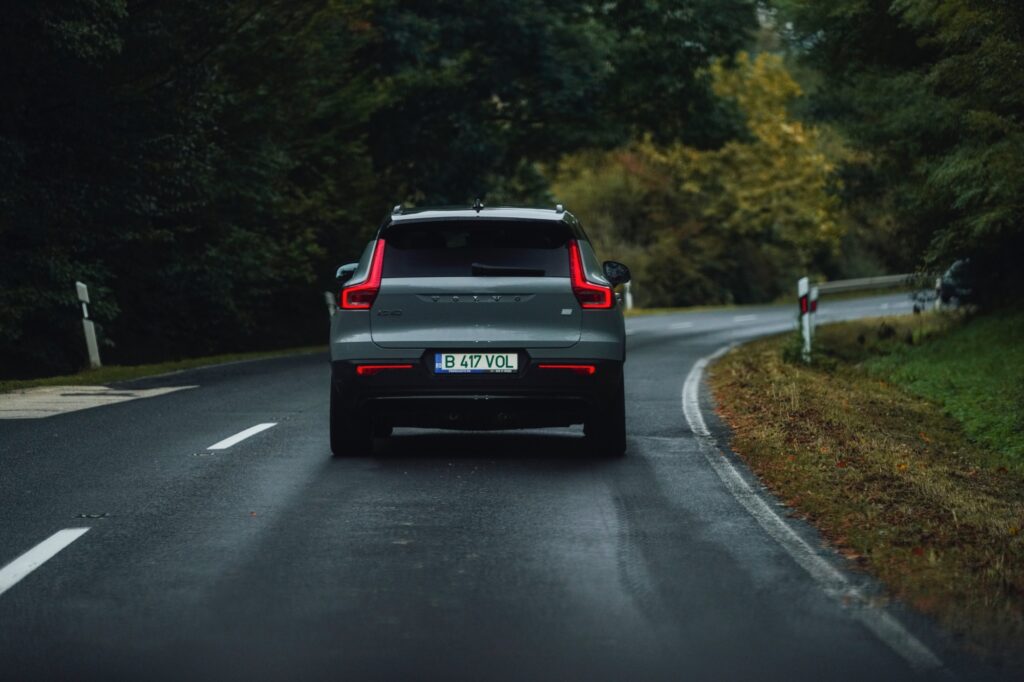
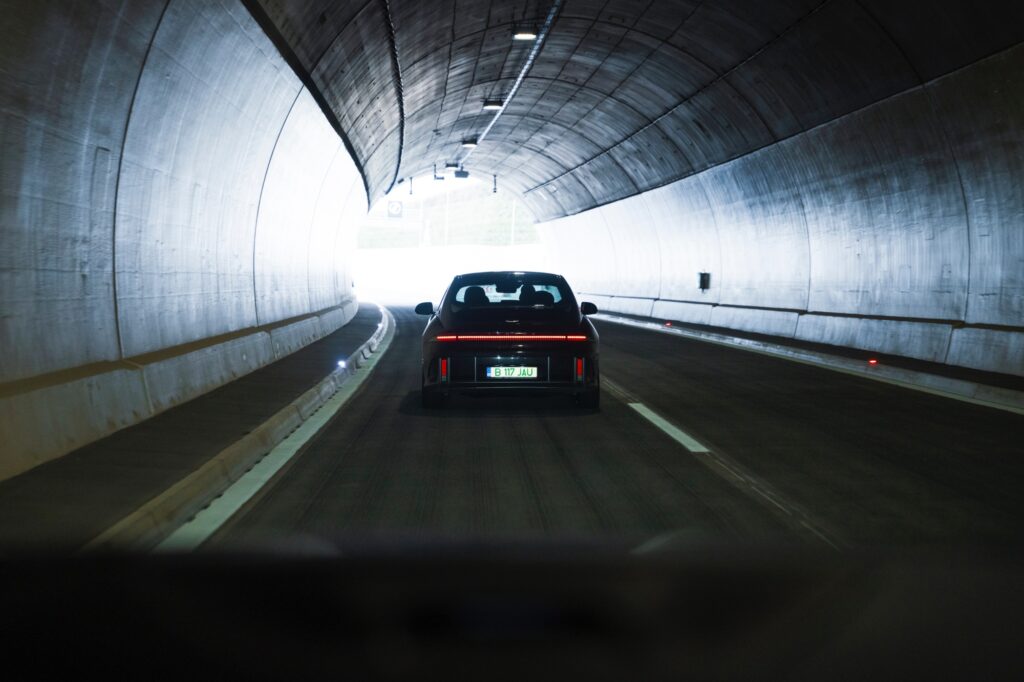
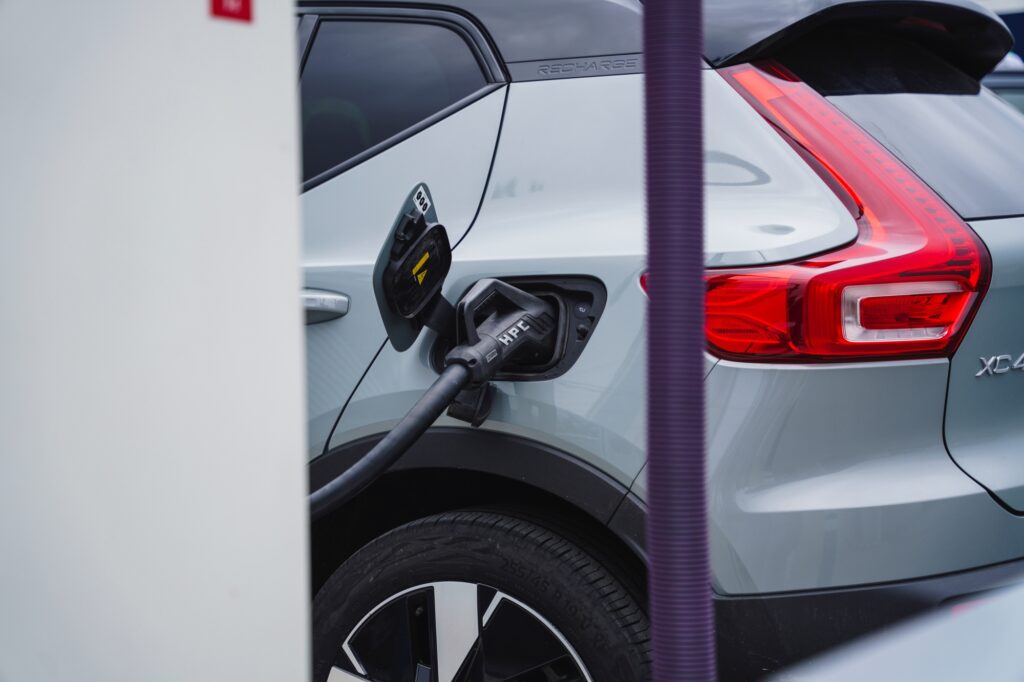
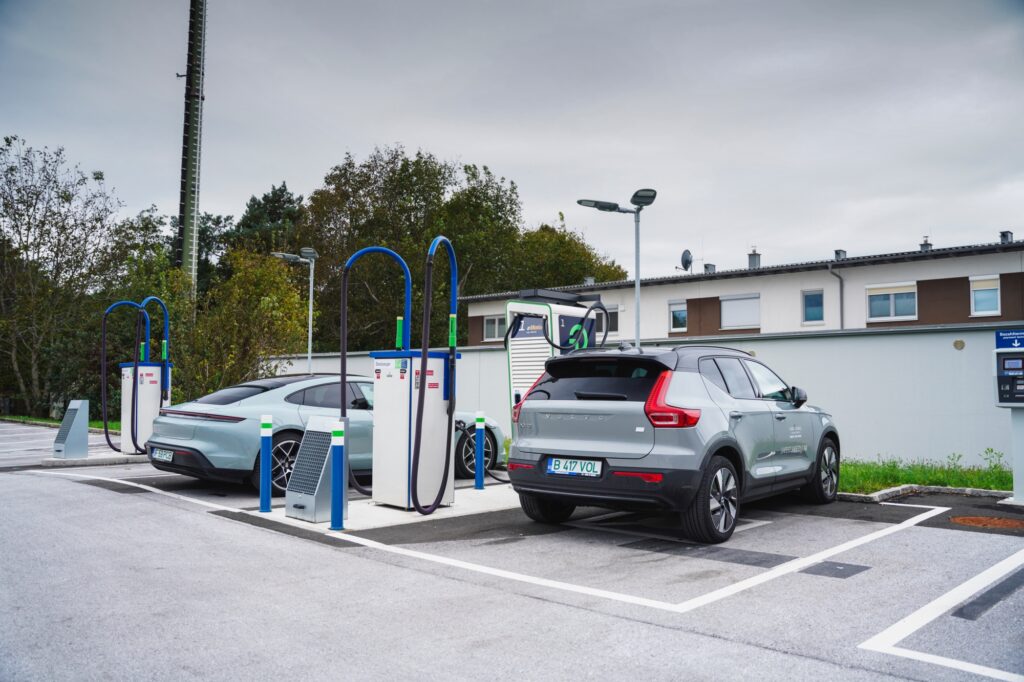

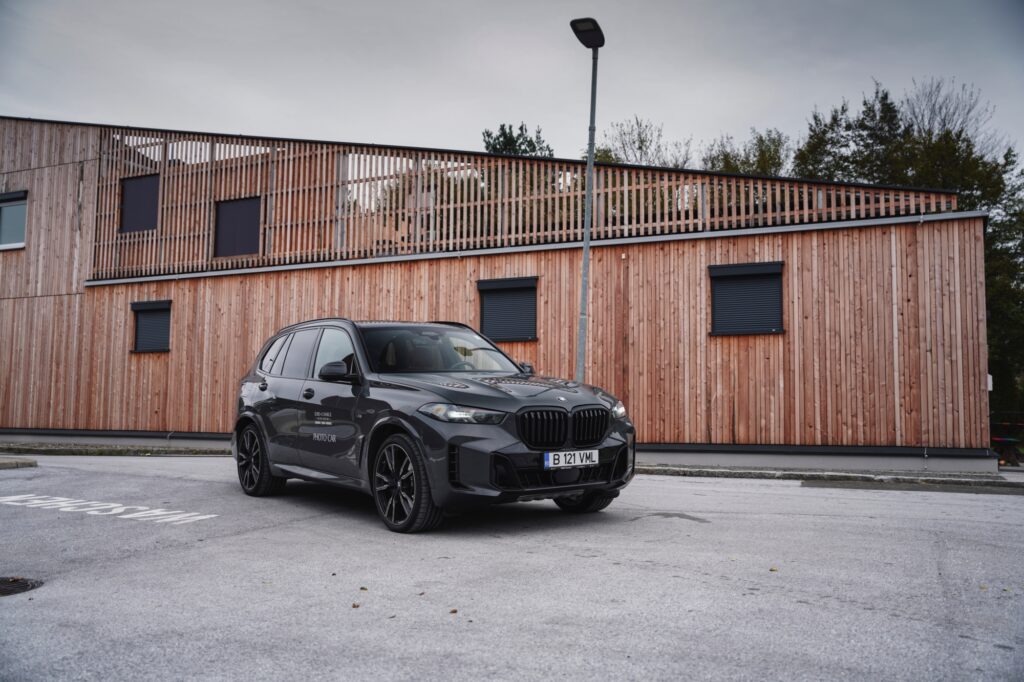
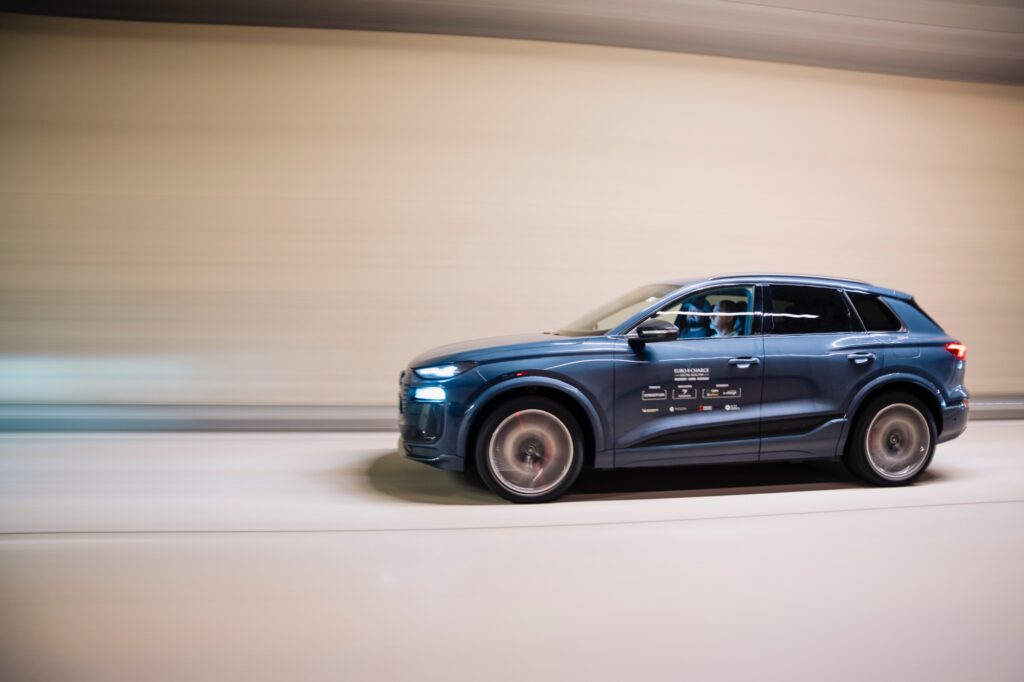
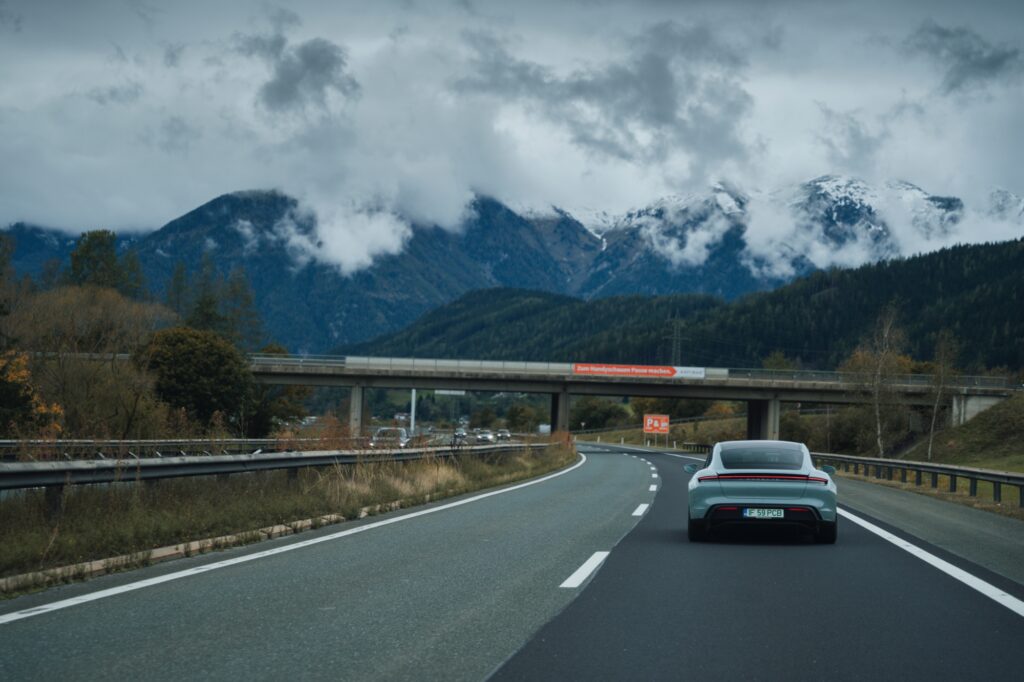
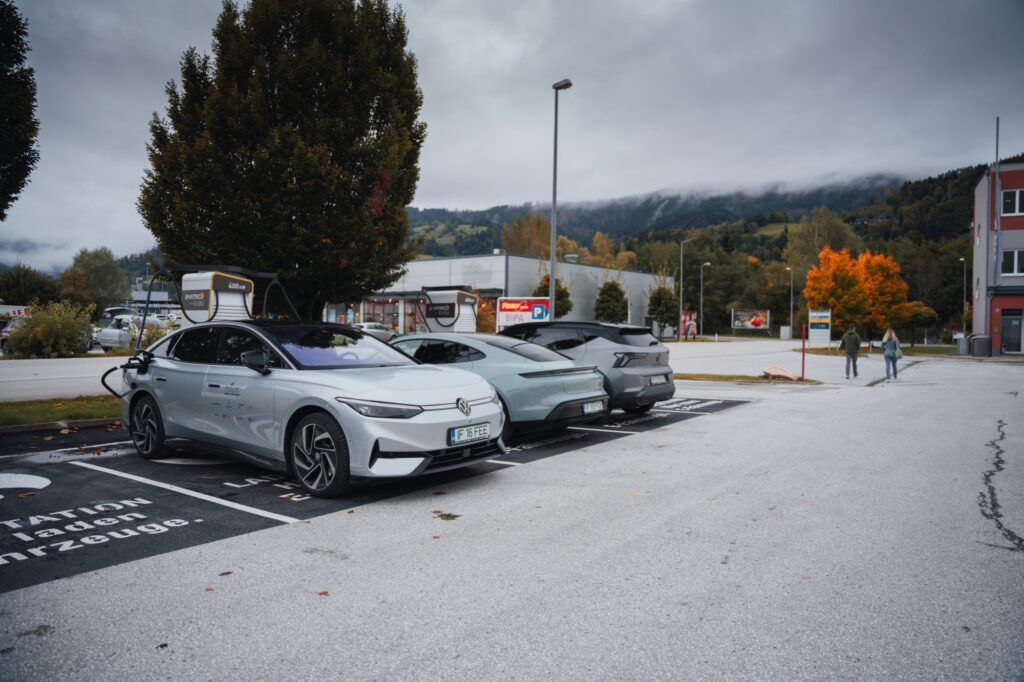
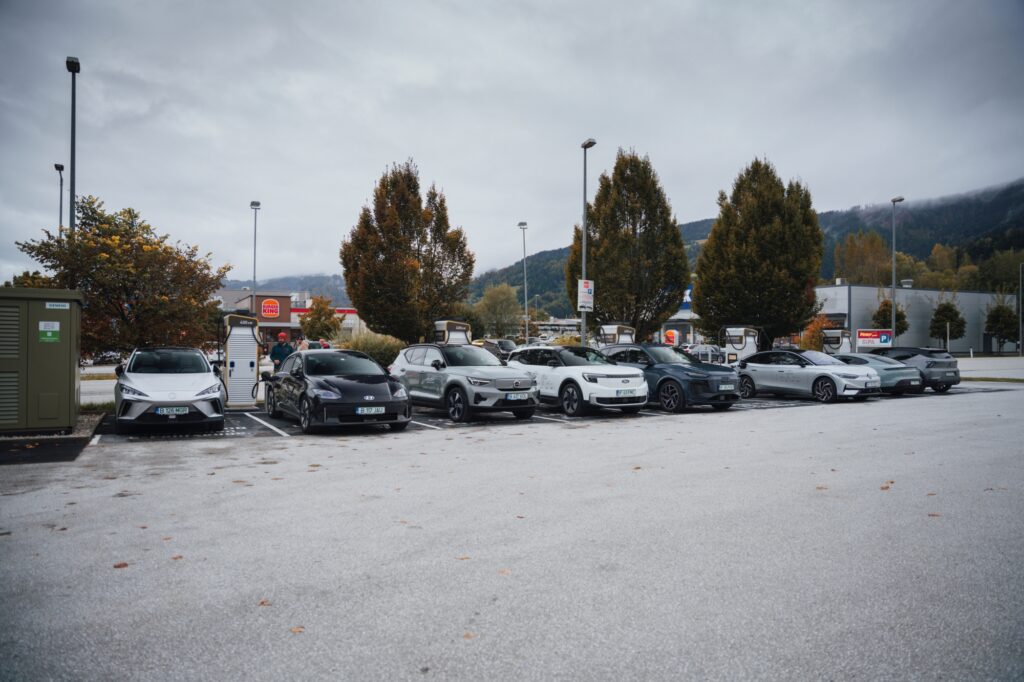

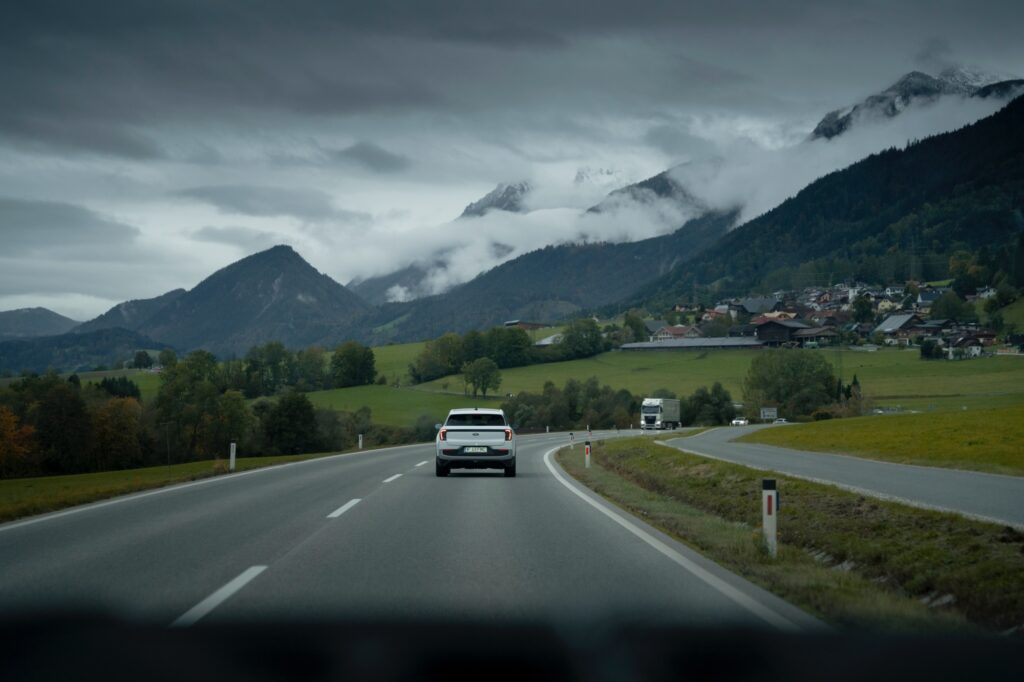
The electrics charged into the orbit of Graz, a city squeezed by a wide, busy, congested belt like a pair of sinuses contained by guttural gutturals. Between two on-the-go photo shoots and lunch break we got the news: no Grossglockner, closed due to snow. And no Dolomites the next day, the day you are reading this.
By the end of the day, all that was left was one last segment washed away by the drizzle. The day was relatively straightforward, easy, a day of speed limits so gentle on the batteries and a day of total prohibition. I missed a fairytale road. Now the electrics go in groups, two by two, three by three.
The hotel isn’t so far away anymore and it’s becoming increasingly clear that all we can do is glide further towards Lisbon, like the reflection of the stop lights on the wet asphalt of the country’s roads raised on graph paper.
Constantin Ciobanu (AUTOCRITICA/Adevărul Auto) on Audi Q6 e-tron
If a car pleasantly tickles my eye, has that beauty that makes me tingle, it already alters my ability to be objective. Personally, I find in the Q6’s bodywork something of a Cayenne meets first-generation Touareg, especially when looking at the car from behind. And all slightly reduced in size to induce a sense of dynamics.
As Hungary and Austria are in the ‘christening’ zone these days, meaning rain, patchy fog and freezing temperatures, they didn’t give me the freedom to savor the 388 hp, little of the electric quattro I enjoyed at the end of the day.
And we’ve discovered a car that’s surprisingly alive dynamically. It hides its pounds very well. I can say that I prefer the Dynamic mode, the one where the suspension is a bit harder, communicates better to the driver what the wheels meet. Precise steering, with a degree of assist that I liked. For long journeys I found the seats a bit hard, especially the recline.
I can’t get rid of “ergonomic incongruities”. I still catch myself wondering why things are invented that don’t really do anything positive ergonomically and in terms of driving safety. The driver has a panel on the door that totals some 19-21 buttons, plus the 4 window buttons. To press a button there, which isn’t even very precisely demarcated, I have to take my eyes off the road and concentrate on identifying the button…
As we were driving at 5 degrees towards the end of the day, I find the average consumption of 21-22 kWh natural, considering the mixed route – highway/express roads. A plus for the steering wheel texture, I liked it!

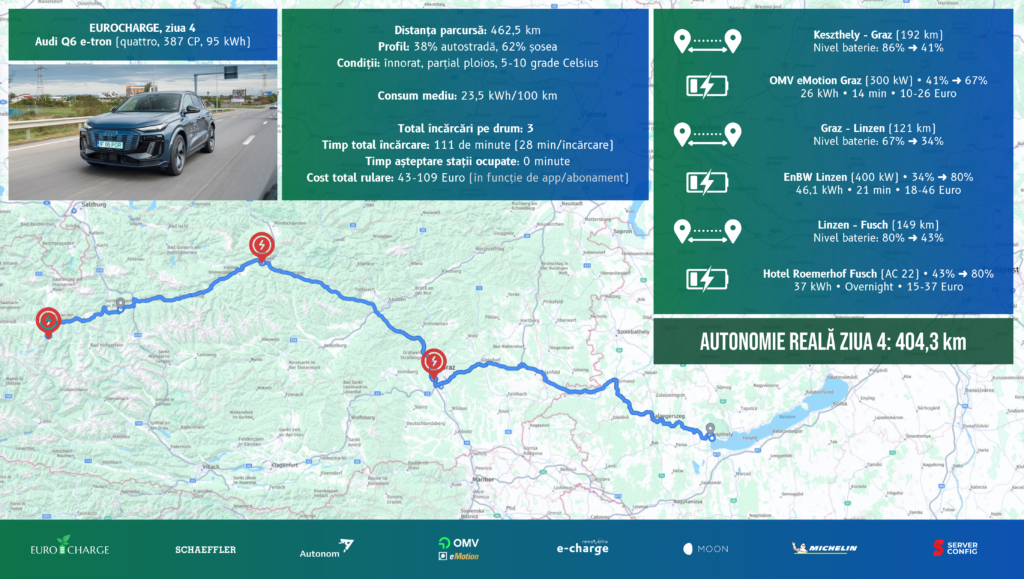
Alin Ionescu (The Machinist) on Ford Explorer EV
After the Audi Q6 e-tron, the Ford Explorer experience was like a return to the things you really need. I mean, I don’t want to sound as if the Audi seemed for a moment unnecessary, but there were times when I felt it offered too much. That’s why it costs over 100,000 euros.
The Ford, on the other hand, is a compact SUV under €50,000 that covers all the needs of a family. It’s roomy, it’s comfortable, it rides calmly and securely on its volumes and masses, it offers a complete experience on both the multimedia and assistance systems. And with 286bhp and 545Nm from the rear axle-driven engine, the Ford moves very well, drives nicely, has an ergonomic driving position, just what you’d expect from a model wearing the blue oval.
But a keener eye will quickly identify that this Ford is actually based on VW’s MEB platform. Basically, beyond the completely changed exterior design, it’s the mechanics of the ID.4, with all its trumps when it comes to efficiency. With a 77 kWh battery capable of charging up to 135 kW, the Explorer easily covered the 450 kilometers on Day 4 of the tour. It started at 86%, charged once, at midday, and arrived at the hotel in the evening at 65%. Business as usual.
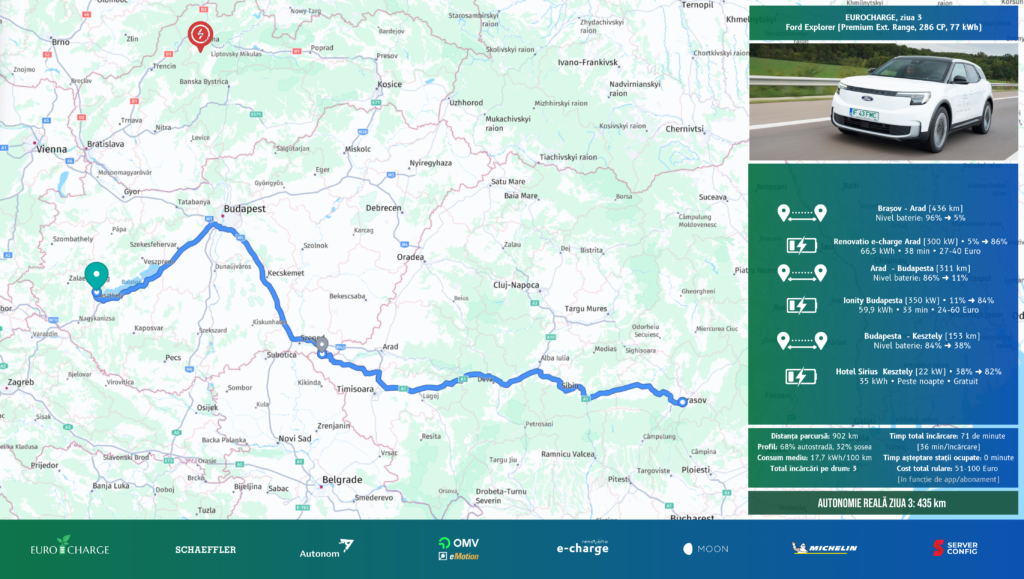
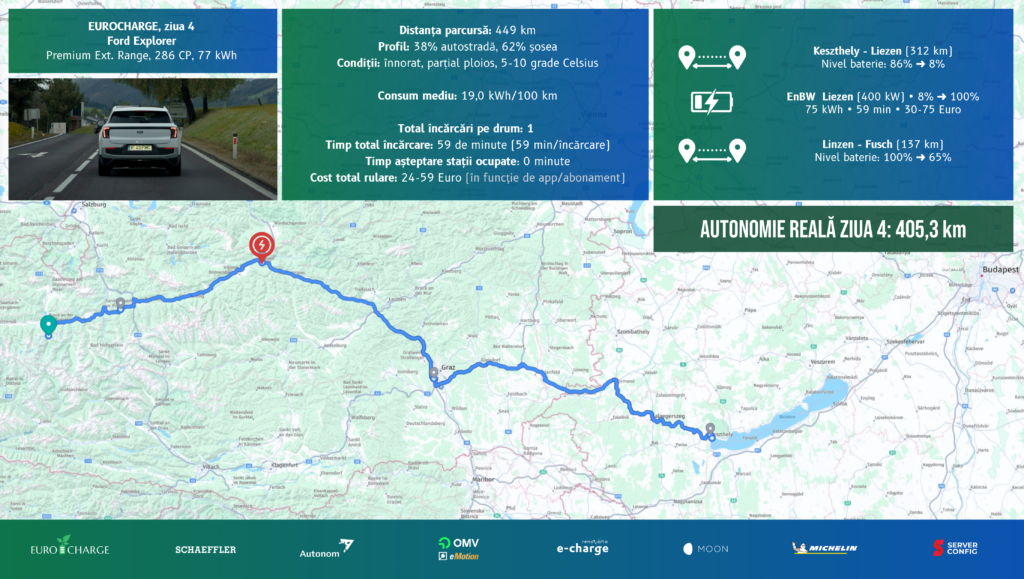
Andrei Barbu(MotorVlog TV) on Hyundai Ioniq 6
The interesting part, with revealing effects in EUROCHARGE, is that you can have the opportunity to drive models in the same price range, with the same powertrain and concept, but with completely opposite shapes. That’s how it was for me: I stepped out of the Ford Explorer into the Hyundai Ioniq 6. Both have a single electric motor, both have rear-wheel drive, both have batteries around 75 kWh and both cost around €45,000, depending on trim.
And if you look at the “comparison” strictly as one between two electric cars for which driving efficiency is the most important, the winner is clear. And if it’s not clear, I’ll score: Ioniq 6. The 800-volt architecture is great for long journeys, the interior space is fabulous, and the exterior design is marvelous for such a car: a sort of retro-futuristic, retro-futuristic sedan-coupe that at least manages to catch the eye.
Otherwise, the Ioniq 6 doesn’t wow you with interior materials on base trim, the old-fashioned USB for Apple CarPlay connectivity is hard to find among the plethora of USB-Cs, and the dynamic performance isn’t in tune with Elon’s Elon-targets either. But overall, the Ioniq 6 is, without much argument, one of the best electric cars on the market. Because it gives you the most important argument. Which is the safety of going long and fast, knowing that in just a few minutes you’ll be pulling 230 kW from a station and on your way.
And that’s more important than vegan leather and soft plastic. Especially when it comes to comfort and driving experience, the Ioniq 6 not only doesn’t disappoint, but surprises in the most pleasant way possible.
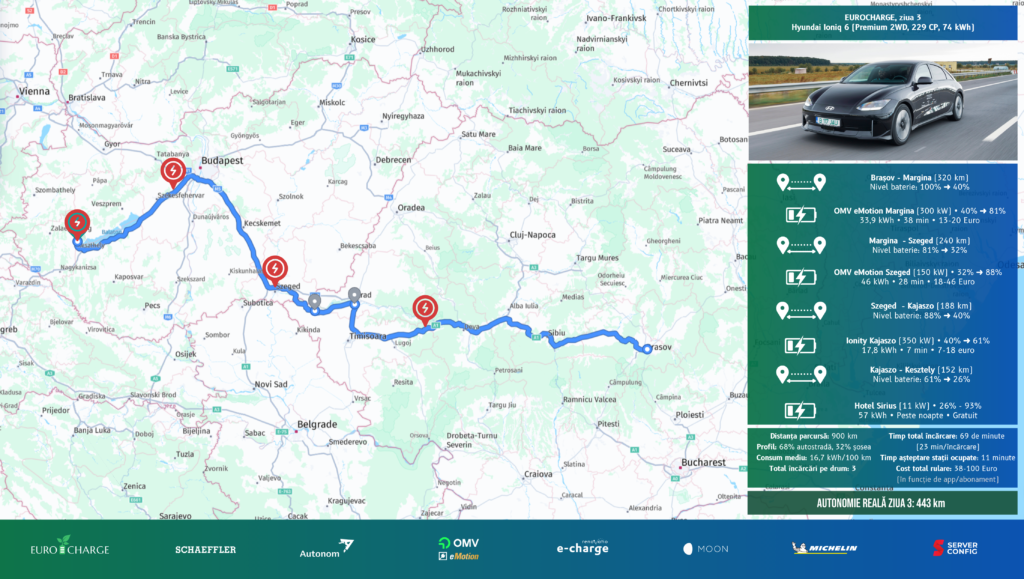
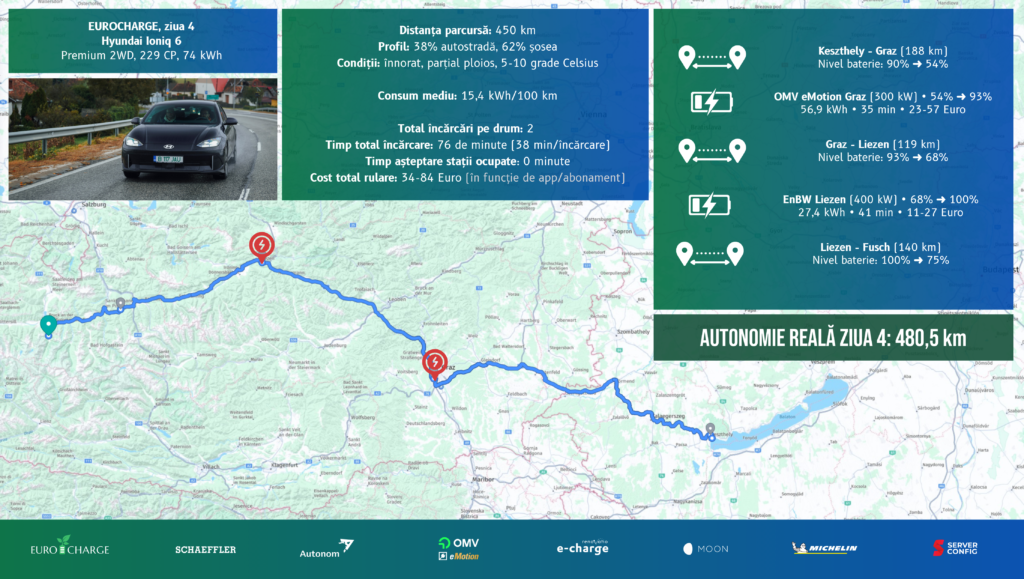
Radu Tudoroiu (Digital Storyteller) on MG4
Getting into the MG4 on a gloomy, gray-sky, rainy day is somewhat contraindicated. As soon as you open the door, you’re confronted with light-colored materials, an unexpectedly generous interior space and a good driving position.
The on-road handling is interesting, perhaps a little too “fussy” with the lane assist and adaptive cruise control braking systems, but otherwise it was a pleasure to navigate, especially as the multifunction steering wheel helps you make a lot of settings very easily. In terms of range, the MG4 doesn’t disappoint, even if it does have a fuel consumption that seems like a big idea for the overall size and power of the car.
Austrian motorways and 500 kilometers today in very dog-like weather was a perfect opportunity to test the comfort of the seats on the long haul and how much fatigue they accumulate. Short answer: the seats take you in your arms and you get off relaxed after a round of driving and fatigue was minimal.
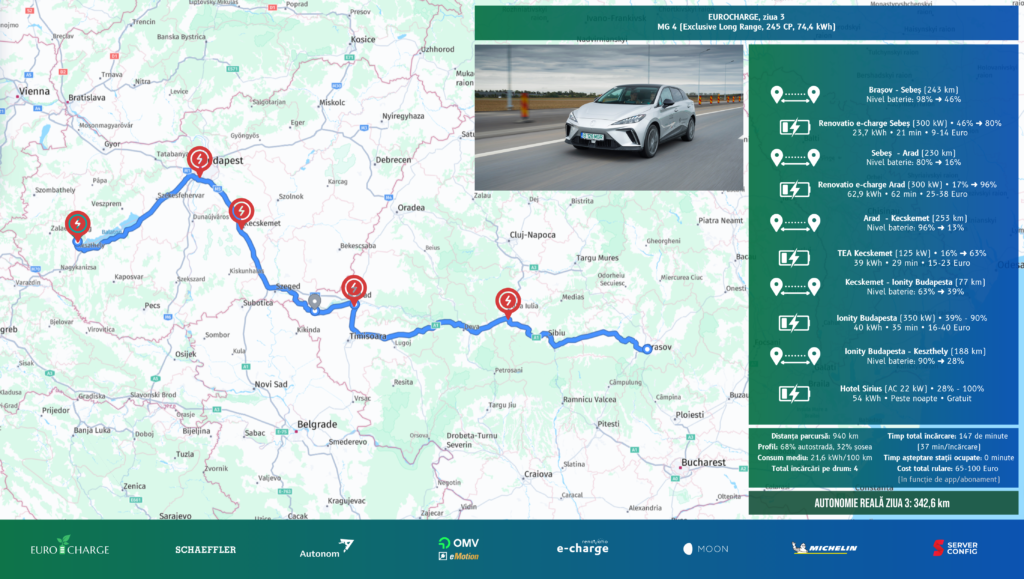
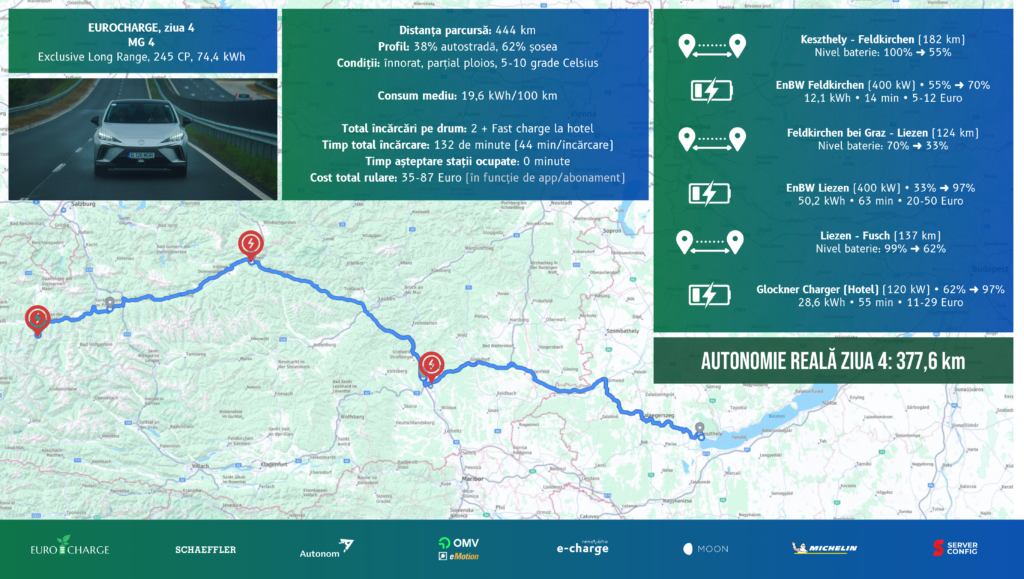
Bogdan Grigorescu(AutoExpert) about Porsche Taycan
EUROCHARGE has been knocking me through the walls, taking me straight from the most affordable of the group, the MG4, to the most expensive, the Porsche Taycan, with a difference of 100,000 euros. And, I must admit, I loved the experience of the brutal transition between the two extremes!
From the second you (literally) get behind the wheel, you realize that the Taycan has the grips of a 911, albeit in a different league. The near-horizontal driving position, the low, upright steering wheel, the cockpit with a center console that flows between the seats, all hint at the fastback’s racer DNA. Sure, it’s not the most comfortable way to travel, but it’s the most exciting.
The adaptive suspension with three settings, Normal, Sport and Sport Plus (who needs Comfort, anyway?), the least-assisted steering of the bunch and precise as a neurosurgeon, the rear axle’s responsiveness under the 435 horsepower, all awaken the senses to life. So does plugging in the DC socket, which charges with up to 320 kW, in our case the station showing 161 kW, when the Audi Q6 e-tron was also charging from it.
Today, through Austria, on express roads and on steep, winding roads (positive level difference over 2,500 meters!), at temperatures between 20 degrees Celsius at departure and 5 degrees Celsius at arrival, over a distance of 458 kilometers, the fuel consumption was 18.9 kWh/100 km, equivalent to a range of 460 kilometers (with air conditioning, headlights and music included, of course). Up hill!
Sure, it doesn’t have the most regular-shaped trunk, so if you didn’t have a jigsaw puzzle when you were a kid you’ll rack your brains when stowing bulky luggage. Sure, it doesn’t have the best rearward visibility, where the slanted rear window and 911 hips are in your field of vision. But in exchange for the little earthly inconveniences and €141,514, which is what the touring example costs, you get 2.5 tons of divine tuning packed into a body with historic touches, transposed into the future. You get a real Porsche!
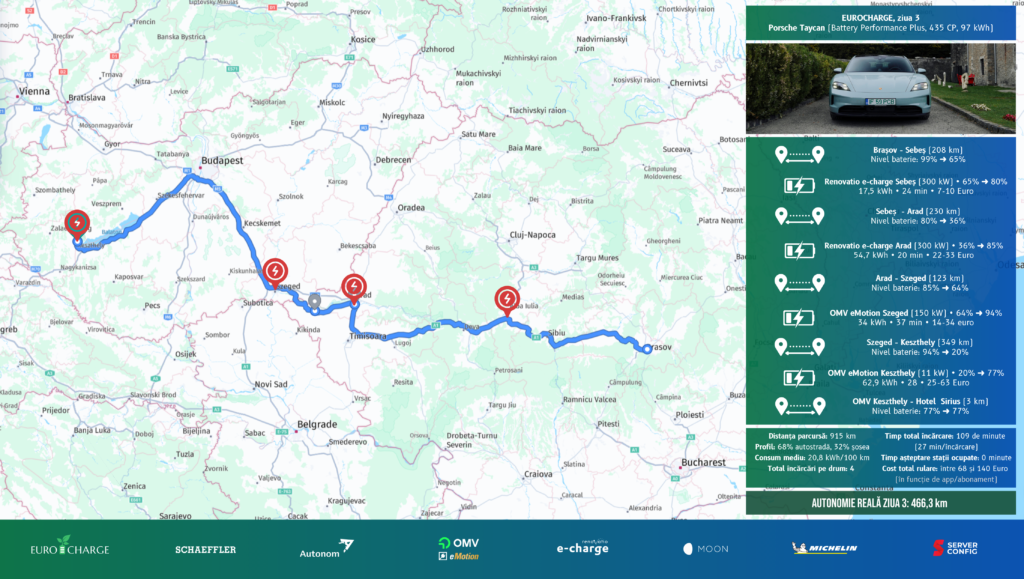
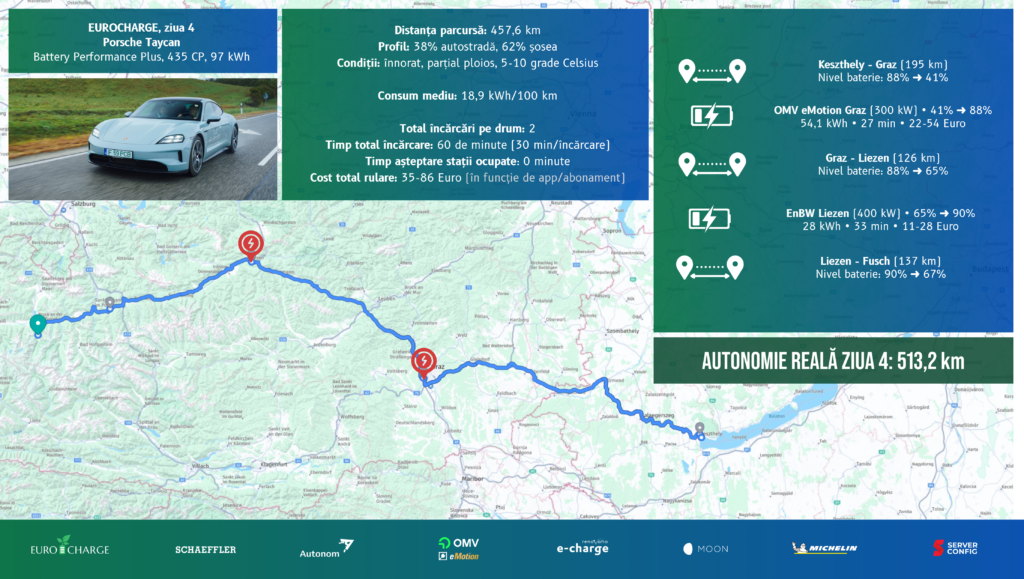
Adi Mitrea(0-100.ro) about Renault Scenic
The Renault Scenic E-Tech is proof that the European car industry can hold its own in Asia. Especially China. This Scenic has a big battery (87 kWh, net), good efficiency (less than 22 kWh/100 km at 5 degrees Celsius – national roads and highways) and long range (300-600 km).
And everything else is superlative. That means a very good multimedia system based on Google Automotive, spectacular ambient lighting, above-average comfort, good thermal and sound insulation.
About 80% of this car is made in Europe. We test it over 9,000 kilometers in EUROCHARGE by Schaeffler. I think it is worth taking a test drive of at least 30 minutes or 20-30 kilometers at your nearest Renault dealer.
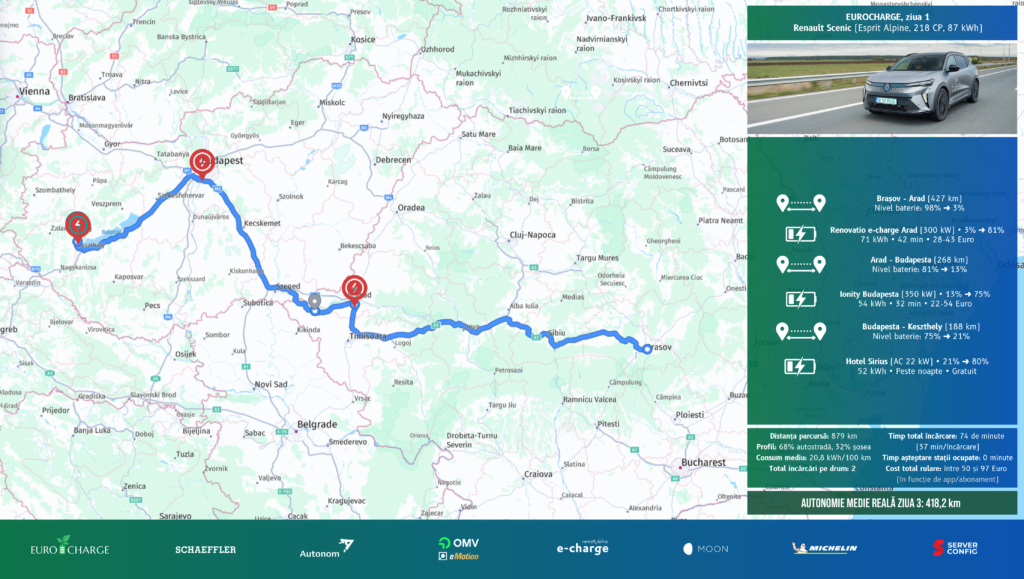
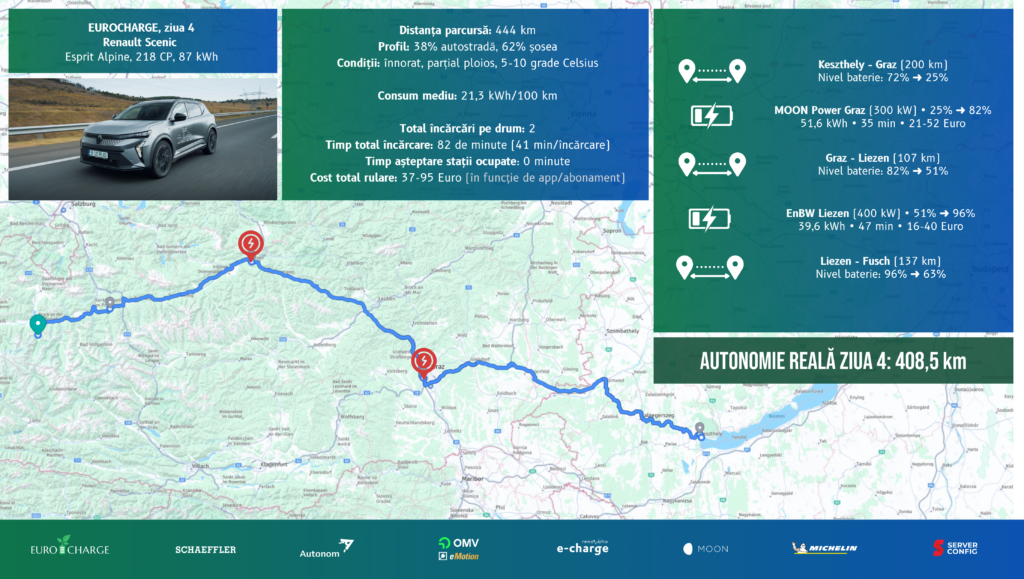
Adi Dima(eblogauto) about Volkswagen ID.7
Have you ever thought of driving across Europe with your family in an electric car? The VW ID.7 makes it sound like the right model for such an adventure. A suspension that easily absorbs the few bumps on Austrian roads? It does. A cabin that’s soundproofed so the little outside noise doesn’t disturb occupants? Yes. A fuel consumption of around 19 kWh/100 km even when you’re on the highway and the air conditioning is working hard because it’s 5 degrees Celsius outside? It does. A price to match? There is, unfortunately.
Also in the “unfortunately” section, I’ll list the unergonomic window and climate controls. I dare you to adjust the climate at the same time as the volume using the touch-sensitive area under the tablet. I can’t say I love the steering-wheel controls either, but overall, the ID.7 gives you that reassurance you want from an electric car – you feel like you could drive thousands of miles without a second of charging panic. And to top it all off, there’s Audi-like comfort.

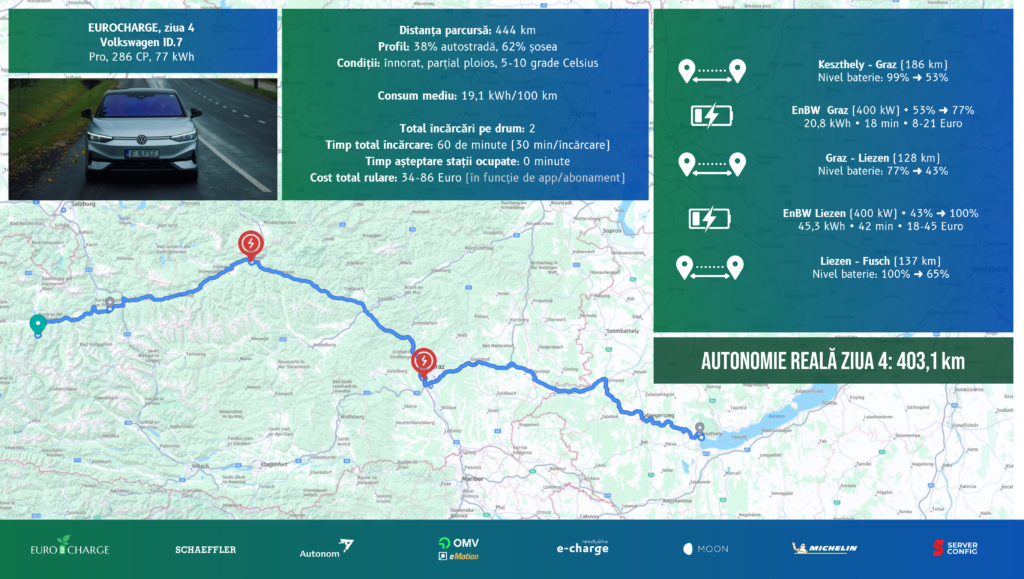
Volvo EX40

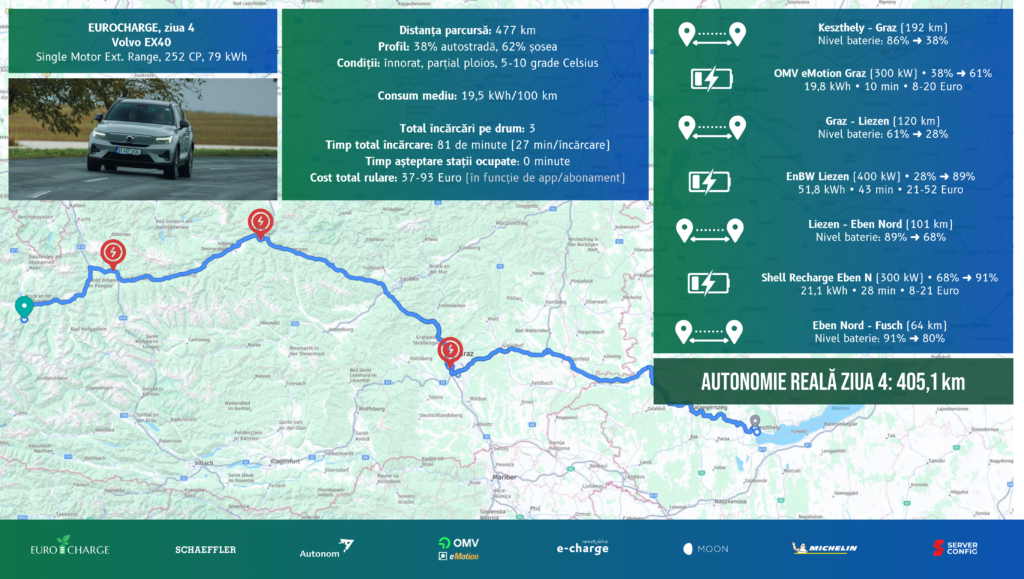
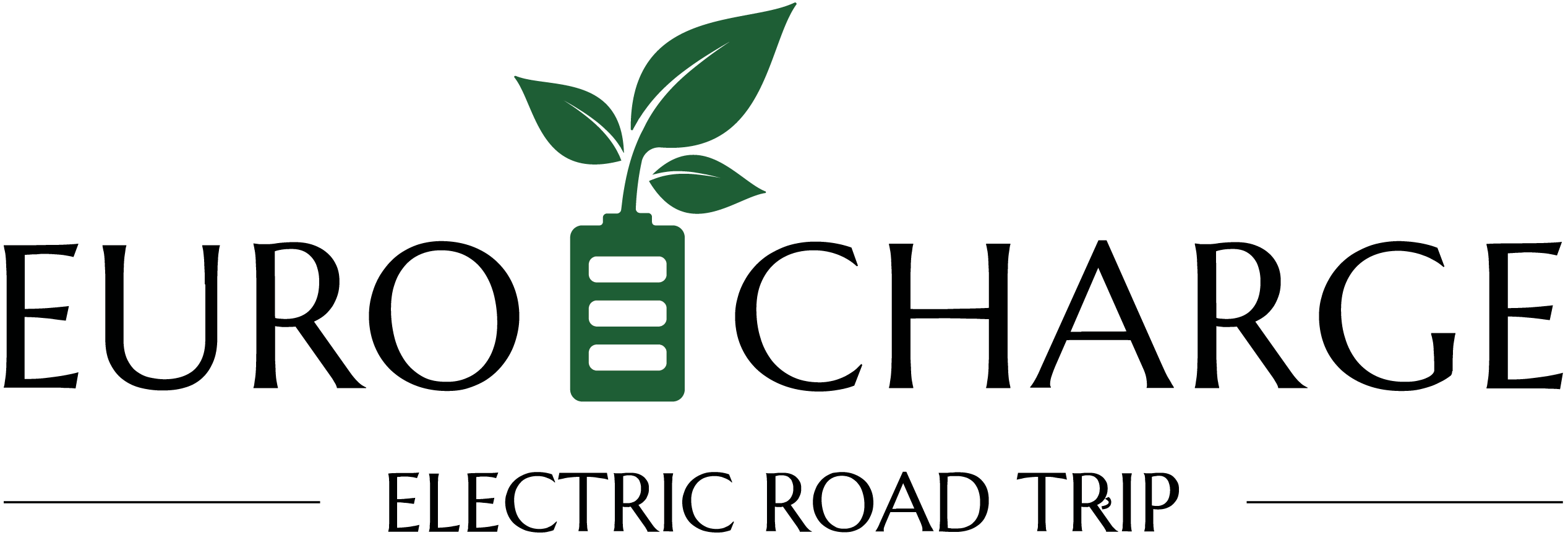
is a project backed by SCHAEFFLER
Charged by
OMV eMotion and Renovatio e-charge
Green Partner
Autonom
Charging stations
MOON România
On the road with
Michelin
Powered by
Server Config

